Contents
- 1. User Manual
- 2. Users manual
User Manual

User’s Guide
Revision 1.1, 2013-05-06
Confidential
Distribution with NDA by Marketing only
DUT Graphical User Interface
for
DUT Tool Package
XWAY™ xRX300/WAVE300 Family
Edition 2013-05-06
Published by
Lantiq Deutschland GmbH
Lilienthalstraße 15
85579 Neubiberg
Germany
© 2013 Lantiq Deutschland GmbH
All Rights Reserved.
Legal Disclaimer
The information given in this document is confidential.
SUCH INFORMATION SHALL IN NO EVENT BE REGARDED AS A GUARANTEE OF CONDITIONS OR
CHARACTERISTICS. WITH RESPECT TO ANY VALUES STATED AS "TYPICAL" AS WELL AS EXAMPLES OR
HINTS PROVIDED HEREIN, INCLUDING THOSE RELATED TO USE AND/OR IMPLEMENTATION OR
APPLICATION OF COMPONENTS, LANTIQ DEUTSCHLAND GMBH ("LANTIQ") HEREBY DISCLAIMS ANY
AND ALL WARRANTIES AND LIABILITIES OF ANY KIND, INCLUDING WITHOUT LIMITATION, WARRANTIES
OF NON-INFRINGEMENT OF INTELLECTUAL PROPERTY RIGHTS OF ANY THIRD PARTY. IN PARTICULAR,
THOSE VALUES, EXAMPLES OR HINTS ARE NO WARRANTIES OF A CERTAIN FUNCTIONALITY,
CONDITION OR QUALITY OF THE LANTIQ COMPONENT AND ALWAYS HAVE TO BE VERIFIED IN THE
TARGET APPLICATION.
The information in this document is subject to regular updates and/or corrections via errata sheet(s) or new
revisions. It is only valid as updated and/or corrected. Once a new revision or errata sheet is available, it can be
downloaded from Lantiq's Competence Center:
www.lantiq.com/contact-lantiq
Any user of this document must ensure that they only use the latest update- and/or corrected revision.
LANTIQ HEREBY DISCLAIMS ANY AND ALL WARRANTIES AND LIABILITIES OF ANY KIND, INCLUDING
WITHOUT LIMITATION, WARRANTIES OF NON-INFRINGEMENT OF INTELLECTUAL PROPERTY RIGHTS
OF ANY THIRD PARTY, WITH RESPECT TO PREVIOUS REVISIONS OF THIS DOCUMENT ONCE AN
UPDATE OR ERRATA SHEET IS AVAILABLE.
Information
For further information on technology, delivery terms and conditions and prices, please contact the nearest Lantiq
office (www.lantiq.com).
Warning
Lantiq components must not be used in life-support devices or systems.
Life-support devices or systems are those systems intended to be implanted in the human body or to support
and/or maintain and sustain and/or protect human life. If they fail, it is reasonable to assume that the health of the
user or other persons may be endangered.
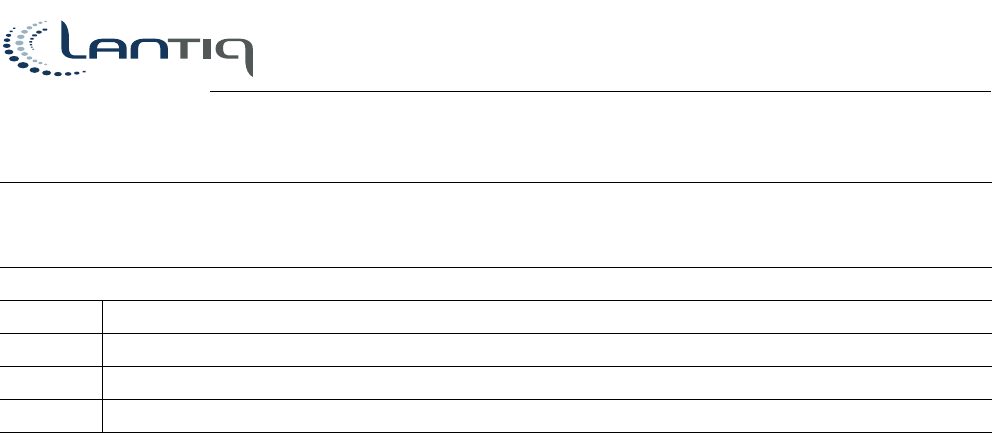
XWAY™ xRX300/WAVE300 Family, DUT Graphical User Interface for DUT Tool Package
Confidential
Revision History: Revision 1.1, 2013-05-06
Previous Revision: Revision 1.0, 2013-03-15
Page Subjects (major changes since last revision)
8Updated Section 1.5, x86 PC Linux Host Requirements.
47 Added Chapter 10, Appendix D - Command Line Control.
DUT Graphical User Interface
DUT Tool Package
Confidential
User’s Guide 3 Revision 1.1, 2013-05-06
Trademarks of Lantiq
CONVERGATE™, COSIC™, DUALFALC™, DUSLIC™, ELIC™, EPIC™, FALC™, GEMINAX™, ISAC™,
IWORX™, OCTALFALC™, OCTAT™, QUADFALC™, SCOUT™, SEROCCO™, SICOFI™, SLIC™, SMINT™,
SOCRATES™, VINAX™, VINETIC™, XWAY™
Other Trademarks
ARM™, Bluetooth™ of Bluetooth SIG Inc. CAT-iq™ of DECT Forum. EPCOS™ of Epcos AG.
HYPERTERMINAL™ of Hilgraeve Incorporated. IEC™ of Commission Electrotechnique Internationale. IrDA™ of
Infrared Data Association Corporation. ISO™ of INTERNATIONAL ORGANIZATION FOR STANDARDIZATION.
MATLAB™ of MathWorks, Inc. NUCLEUS™ of Mentor Graphics Corporation. MIPS® of MIPS Technologies, Inc.,
USA. muRata™ of MURATA MANUFACTURING CO. SOLARIS™ of Sun Microsystems, Inc. Samtec® of Samtec
Inc. TEAKLITE™ of CEVA, Inc. TEKTRONIX™ of Tektronix Inc. UNIX™ of X/Open Company Limited.
VERILOG™, PALLADIUM™ of Cadence Design Systems, Inc. VxWorks™, WIND RIVER™ of WIND RIVER
SYSTEMS.
Last Trademarks Update 2012-01-04

DUT Graphical User Interface
DUT Tool Package
Table of Contents
User’s Guide 4 Revision 1.1, 2013-05-06
Confidential
Table of Contents . . . . . . . . . . . . . . . . . . . . . . . . . . . . . . . . . . . . . . . . . . . . . . . . . . . . . . . . . . . . . . . . 4
List of Figures . . . . . . . . . . . . . . . . . . . . . . . . . . . . . . . . . . . . . . . . . . . . . . . . . . . . . . . . . . . . . . . . . . . 6
List of Tables . . . . . . . . . . . . . . . . . . . . . . . . . . . . . . . . . . . . . . . . . . . . . . . . . . . . . . . . . . . . . . . . . . . . 7
1 Introduction . . . . . . . . . . . . . . . . . . . . . . . . . . . . . . . . . . . . . . . . . . . . . . . . . . . . . . . . . . . . . . . . . . . . . 8
1.1 Purpose . . . . . . . . . . . . . . . . . . . . . . . . . . . . . . . . . . . . . . . . . . . . . . . . . . . . . . . . . . . . . . . . . . . . . . . . 8
1.2 About the Test Driver and the DUT GUI Application . . . . . . . . . . . . . . . . . . . . . . . . . . . . . . . . . . . . . . 8
1.3 Content of the Installation Kit . . . . . . . . . . . . . . . . . . . . . . . . . . . . . . . . . . . . . . . . . . . . . . . . . . . . . . . . 8
1.4 Supported Interfaces . . . . . . . . . . . . . . . . . . . . . . . . . . . . . . . . . . . . . . . . . . . . . . . . . . . . . . . . . . . . . . 8
1.5 x86 PC Linux Host Requirements . . . . . . . . . . . . . . . . . . . . . . . . . . . . . . . . . . . . . . . . . . . . . . . . . . . . . 8
2 Installing DUT GUI . . . . . . . . . . . . . . . . . . . . . . . . . . . . . . . . . . . . . . . . . . . . . . . . . . . . . . . . . . . . . . . 9
3 Launching DUT GUI . . . . . . . . . . . . . . . . . . . . . . . . . . . . . . . . . . . . . . . . . . . . . . . . . . . . . . . . . . . . . 10
3.1 Troubleshooting Launch Errors . . . . . . . . . . . . . . . . . . . . . . . . . . . . . . . . . . . . . . . . . . . . . . . . . . . . . 11
4 Overview of the DUT GUI . . . . . . . . . . . . . . . . . . . . . . . . . . . . . . . . . . . . . . . . . . . . . . . . . . . . . . . . . 13
4.1 DUT GUI Features . . . . . . . . . . . . . . . . . . . . . . . . . . . . . . . . . . . . . . . . . . . . . . . . . . . . . . . . . . . . . . . 13
4.2 The Tab Bar . . . . . . . . . . . . . . . . . . . . . . . . . . . . . . . . . . . . . . . . . . . . . . . . . . . . . . . . . . . . . . . . . . . . 13
4.3 Log and Messages Pane . . . . . . . . . . . . . . . . . . . . . . . . . . . . . . . . . . . . . . . . . . . . . . . . . . . . . . . . . . 13
4.4 Calibration Data Screen . . . . . . . . . . . . . . . . . . . . . . . . . . . . . . . . . . . . . . . . . . . . . . . . . . . . . . . . . . . 14
5 Using the DUT GUI . . . . . . . . . . . . . . . . . . . . . . . . . . . . . . . . . . . . . . . . . . . . . . . . . . . . . . . . . . . . . . 15
5.1 Connection Options . . . . . . . . . . . . . . . . . . . . . . . . . . . . . . . . . . . . . . . . . . . . . . . . . . . . . . . . . . . . . . 15
5.1.1 dut_cfg.txt Configuration Parameters . . . . . . . . . . . . . . . . . . . . . . . . . . . . . . . . . . . . . . . . . . . . . . . 15
5.2 Setting the DUT's Channel . . . . . . . . . . . . . . . . . . . . . . . . . . . . . . . . . . . . . . . . . . . . . . . . . . . . . . . . . 16
5.3 Setting Output Power . . . . . . . . . . . . . . . . . . . . . . . . . . . . . . . . . . . . . . . . . . . . . . . . . . . . . . . . . . . . . 17
5.4 Closed Loop Output Power Table . . . . . . . . . . . . . . . . . . . . . . . . . . . . . . . . . . . . . . . . . . . . . . . . . . . . 18
5.4.1 Constant Power . . . . . . . . . . . . . . . . . . . . . . . . . . . . . . . . . . . . . . . . . . . . . . . . . . . . . . . . . . . . . . . . 18
5.4.2 Back Off Power . . . . . . . . . . . . . . . . . . . . . . . . . . . . . . . . . . . . . . . . . . . . . . . . . . . . . . . . . . . . . . . . 19
5.5 Using Regulatory Constraints in Closed Loop Tx Mode . . . . . . . . . . . . . . . . . . . . . . . . . . . . . . . . . . . 19
5.5.1 Regulatory Limitations . . . . . . . . . . . . . . . . . . . . . . . . . . . . . . . . . . . . . . . . . . . . . . . . . . . . . . . . . . . 19
5.5.2 Hardware Limitations . . . . . . . . . . . . . . . . . . . . . . . . . . . . . . . . . . . . . . . . . . . . . . . . . . . . . . . . . . . . 20
5.6 Changing BB and PA Driver Gains . . . . . . . . . . . . . . . . . . . . . . . . . . . . . . . . . . . . . . . . . . . . . . . . . . . 20
5.7 Transmitting in CW Mode and Changing IFS Section . . . . . . . . . . . . . . . . . . . . . . . . . . . . . . . . . . . . 21
5.8 Setting Antenna Configuration . . . . . . . . . . . . . . . . . . . . . . . . . . . . . . . . . . . . . . . . . . . . . . . . . . . . . . 21
5.9 Rx Information and PA Detector Information . . . . . . . . . . . . . . . . . . . . . . . . . . . . . . . . . . . . . . . . . . . 22
5.10 Chip Gain Information . . . . . . . . . . . . . . . . . . . . . . . . . . . . . . . . . . . . . . . . . . . . . . . . . . . . . . . . . . . . . 22
5.11 DUT and Chip Versions . . . . . . . . . . . . . . . . . . . . . . . . . . . . . . . . . . . . . . . . . . . . . . . . . . . . . . . . . . . 23
5.12 Reading and Writing the EEPROM/Flash . . . . . . . . . . . . . . . . . . . . . . . . . . . . . . . . . . . . . . . . . . . . . . 23
5.12.1 Configuring EEPROM/Flash Area Size . . . . . . . . . . . . . . . . . . . . . . . . . . . . . . . . . . . . . . . . . . . . . . 23
5.12.2 Burning a File to EEPROM/Flash . . . . . . . . . . . . . . . . . . . . . . . . . . . . . . . . . . . . . . . . . . . . . . . . . . 23
5.12.3 Working with Serial Numbers and MAC Addresses . . . . . . . . . . . . . . . . . . . . . . . . . . . . . . . . . . . . 24
5.12.4 Changing Raw Content . . . . . . . . . . . . . . . . . . . . . . . . . . . . . . . . . . . . . . . . . . . . . . . . . . . . . . . . . . 26
5.13 XTAL Calibration . . . . . . . . . . . . . . . . . . . . . . . . . . . . . . . . . . . . . . . . . . . . . . . . . . . . . . . . . . . . . . . . . 27
6 Available Functions in mt_dut.dll . . . . . . . . . . . . . . . . . . . . . . . . . . . . . . . . . . . . . . . . . . . . . . . . . . 28
6.1 Init Process . . . . . . . . . . . . . . . . . . . . . . . . . . . . . . . . . . . . . . . . . . . . . . . . . . . . . . . . . . . . . . . . . . . . . 28
6.2 Calibration Process and Tx Tests . . . . . . . . . . . . . . . . . . . . . . . . . . . . . . . . . . . . . . . . . . . . . . . . . . . . 28
6.3 Burning the EEPROM . . . . . . . . . . . . . . . . . . . . . . . . . . . . . . . . . . . . . . . . . . . . . . . . . . . . . . . . . . . . . 29
6.4 EEPROM Burning New Calibration Method Function . . . . . . . . . . . . . . . . . . . . . . . . . . . . . . . . . . . . . 30
6.5 Sensitivity Check . . . . . . . . . . . . . . . . . . . . . . . . . . . . . . . . . . . . . . . . . . . . . . . . . . . . . . . . . . . . . . . . 30
Table of Contents

DUT Graphical User Interface
DUT Tool Package
Table of Contents
Confidential
User’s Guide 5 Revision 1.1, 2013-05-06
6.6 Finalize the Test . . . . . . . . . . . . . . . . . . . . . . . . . . . . . . . . . . . . . . . . . . . . . . . . . . . . . . . . . . . . . . . . . 31
6.7 Others . . . . . . . . . . . . . . . . . . . . . . . . . . . . . . . . . . . . . . . . . . . . . . . . . . . . . . . . . . . . . . . . . . . . . . . . . 31
7 Appendix A - PCI EEPROM Address Map . . . . . . . . . . . . . . . . . . . . . . . . . . . . . . . . . . . . . . . . . . . 33
8 Appendix B - Example Code for mt_dut.dll Usage . . . . . . . . . . . . . . . . . . . . . . . . . . . . . . . . . . . . 34
9 Appendix C - Country Codes . . . . . . . . . . . . . . . . . . . . . . . . . . . . . . . . . . . . . . . . . . . . . . . . . . . . . . 38
10 Appendix D - Command Line Control . . . . . . . . . . . . . . . . . . . . . . . . . . . . . . . . . . . . . . . . . . . . . . . 47
10.1 Basic Configurations . . . . . . . . . . . . . . . . . . . . . . . . . . . . . . . . . . . . . . . . . . . . . . . . . . . . . . . . . . . . . . 48
References . . . . . . . . . . . . . . . . . . . . . . . . . . . . . . . . . . . . . . . . . . . . . . . . . . . . . . . . . . . . . . . . . . . . 49
Terminology . . . . . . . . . . . . . . . . . . . . . . . . . . . . . . . . . . . . . . . . . . . . . . . . . . . . . . . . . . . . . . . . . . . 50

DUT Graphical User Interface
DUT Tool Package
List of Figures
User’s Guide 6 Revision 1.1, 2013-05-06
Confidential
Figure 1 DUT Installation Welcome Screen . . . . . . . . . . . . . . . . . . . . . . . . . . . . . . . . . . . . . . . . . . . . . . . . . . 9
Figure 2 DUT GUI Main Screen (Successful Launch) . . . . . . . . . . . . . . . . . . . . . . . . . . . . . . . . . . . . . . . . . 10
Figure 3 Main Screen of DUT GUI Application after an Unsuccessful Launch. . . . . . . . . . . . . . . . . . . . . . . 11
Figure 4 DUT DLL Log . . . . . . . . . . . . . . . . . . . . . . . . . . . . . . . . . . . . . . . . . . . . . . . . . . . . . . . . . . . . . . . . . 12
Figure 5 DUT GUI Tabs . . . . . . . . . . . . . . . . . . . . . . . . . . . . . . . . . . . . . . . . . . . . . . . . . . . . . . . . . . . . . . . . 13
Figure 6 Log and Messages Pane . . . . . . . . . . . . . . . . . . . . . . . . . . . . . . . . . . . . . . . . . . . . . . . . . . . . . . . . 13
Figure 7 Calibration Data Screen . . . . . . . . . . . . . . . . . . . . . . . . . . . . . . . . . . . . . . . . . . . . . . . . . . . . . . . . . 14
Figure 8 Channel Setting and Transmission Screen . . . . . . . . . . . . . . . . . . . . . . . . . . . . . . . . . . . . . . . . . . 16
Figure 9 Example of Primary and Secondary Channel Selection in CB Mode . . . . . . . . . . . . . . . . . . . . . . . 17
Figure 10 Open Loop Tx Setting. . . . . . . . . . . . . . . . . . . . . . . . . . . . . . . . . . . . . . . . . . . . . . . . . . . . . . . . . . . 17
Figure 11 Closed Loop Tx Setting . . . . . . . . . . . . . . . . . . . . . . . . . . . . . . . . . . . . . . . . . . . . . . . . . . . . . . . . . 18
Figure 12 Regulatory Constraints in Closed Loop Tx Mode . . . . . . . . . . . . . . . . . . . . . . . . . . . . . . . . . . . . . . 19
Figure 13 BB and PA Driver Gain Setting. . . . . . . . . . . . . . . . . . . . . . . . . . . . . . . . . . . . . . . . . . . . . . . . . . . . 20
Figure 14 Transmitting in CW Mode and Changing IFS Section . . . . . . . . . . . . . . . . . . . . . . . . . . . . . . . . . . 21
Figure 15 Antenna On/Off Section . . . . . . . . . . . . . . . . . . . . . . . . . . . . . . . . . . . . . . . . . . . . . . . . . . . . . . . . . 21
Figure 16 RSSI, Packets Counter and PA Detector Information . . . . . . . . . . . . . . . . . . . . . . . . . . . . . . . . . . 22
Figure 17 Chip Gain Information. . . . . . . . . . . . . . . . . . . . . . . . . . . . . . . . . . . . . . . . . . . . . . . . . . . . . . . . . . . 22
Figure 18 Version Information. . . . . . . . . . . . . . . . . . . . . . . . . . . . . . . . . . . . . . . . . . . . . . . . . . . . . . . . . . . . . 23
Figure 19 EEPROM/Flash Burning Section . . . . . . . . . . . . . . . . . . . . . . . . . . . . . . . . . . . . . . . . . . . . . . . . . . 23
Figure 20 MAC Address and S/N Information R/W. . . . . . . . . . . . . . . . . . . . . . . . . . . . . . . . . . . . . . . . . . . . . 24
Figure 21 EEPROM/Flash Raw Data . . . . . . . . . . . . . . . . . . . . . . . . . . . . . . . . . . . . . . . . . . . . . . . . . . . . . . . 26
Figure 22 XTAL Calibration. . . . . . . . . . . . . . . . . . . . . . . . . . . . . . . . . . . . . . . . . . . . . . . . . . . . . . . . . . . . . . . 27
Figure 23 Burn Calibration Structure . . . . . . . . . . . . . . . . . . . . . . . . . . . . . . . . . . . . . . . . . . . . . . . . . . . . . . . 30
Figure 24 BCL CLI . . . . . . . . . . . . . . . . . . . . . . . . . . . . . . . . . . . . . . . . . . . . . . . . . . . . . . . . . . . . . . . . . . . . . 47
Figure 25 Successful CLI Inputs. . . . . . . . . . . . . . . . . . . . . . . . . . . . . . . . . . . . . . . . . . . . . . . . . . . . . . . . . . . 47
List of Figures

DUT Graphical User Interface
DUT Tool Package
List of Tables
User’s Guide 7 Revision 1.1, 2013-05-06
Confidential
Table 1 Typical Launch Errors and Solutions . . . . . . . . . . . . . . . . . . . . . . . . . . . . . . . . . . . . . . . . . . . . . . . 11
Table 2 XTAL Bias Values . . . . . . . . . . . . . . . . . . . . . . . . . . . . . . . . . . . . . . . . . . . . . . . . . . . . . . . . . . . . . 15
Table 3 Constant Power . . . . . . . . . . . . . . . . . . . . . . . . . . . . . . . . . . . . . . . . . . . . . . . . . . . . . . . . . . . . . . . 18
Table 4 Back off Power . . . . . . . . . . . . . . . . . . . . . . . . . . . . . . . . . . . . . . . . . . . . . . . . . . . . . . . . . . . . . . . . 19
Table 5 Reg Limits . . . . . . . . . . . . . . . . . . . . . . . . . . . . . . . . . . . . . . . . . . . . . . . . . . . . . . . . . . . . . . . . . . . 19
Table 6 XTAL Bias Values . . . . . . . . . . . . . . . . . . . . . . . . . . . . . . . . . . . . . . . . . . . . . . . . . . . . . . . . . . . . . 27
Table 7 EEPROM Address Map . . . . . . . . . . . . . . . . . . . . . . . . . . . . . . . . . . . . . . . . . . . . . . . . . . . . . . . . . 33
Table 8 Country Codes . . . . . . . . . . . . . . . . . . . . . . . . . . . . . . . . . . . . . . . . . . . . . . . . . . . . . . . . . . . . . . . . 38
List of Tables

Confidential
DUT Graphical User Interface
DUT Tool Package
Introduction
User’s Guide 8 Revision 1.1, 2013-05-06
1 Introduction
1.1 Purpose
This user guide explains how to use the DUT GUI application. The application is used for hardware development
purposes and evaluations based on Lantiq's WiFi MIMO technology.
1.2 About the Test Driver and the DUT GUI Application
The DUT GUI is an application used to help hardware and RF designers test and verify the behavior of their design
based on Lantiq's WiFi solution.
DUT GUI uses a specially designed test driver with the firmware that uses all HW and PHY level algorithms. The
driver also allows transmission and receiving without the limitations of the IEEE 802.11n standard [4].
The DUT GUI includes an API to control the WiFi functionality (mt_dut.dll). The API can be used to control the DUT
(Device Under Test) from an external application.
Together with wireless LAN test equipment maker LitePoint, Lantiq have integrated this dll into LitePoint's IQFact
Design Verification Test (DVT) software. IQFact is a comprehensive set of WiFi physical layer transmitter and
receiver tests utilizing a large set of channels, data rates and channel bandwidths. The tool allows you to verify
assembly in the production line with a vast test coverage in a short test time
1.3 Content of the Installation Kit
The installation package for the DUT GUI installs the following items onto your computer:
• DUT GUI Core
• ActivePerl application - Perl interpreter (used for TCP/IP mode)
• Release Notes [5]
• User’s Guide (= this document)
Note: Contact Lantiq for the latest application version and installation instructions.
1.4 Supported Interfaces
The DUT GUI application allows you to control the WiFi chipset through the following interface:
• TCP/IP - Control the chipset when it is assembled on a Linux based host. In order for the DUT GUI to work,
the host should contain operational driver firmware. The following Host and Linux versions are supported:
• Lantiq's Universal Gateway (UGW) software
1.5 x86 PC Linux Host Requirements
The DUT system provides following requirements to the x86 Linux host in order to operate properly:
1. Microsoft® Windows® XP SP 3.0 and .NET Framework 2.0 (min. requirement)
2. Support for Microsoft® Windows® 7, 32/64 bit
3. OS login/password required is root/wlan
4. This may be changed by editing the linux_hosts.txt file in the DUT's installation directory, with a new
username/password to be specified in its [PC] section.
5. Tftp client package must be installed.
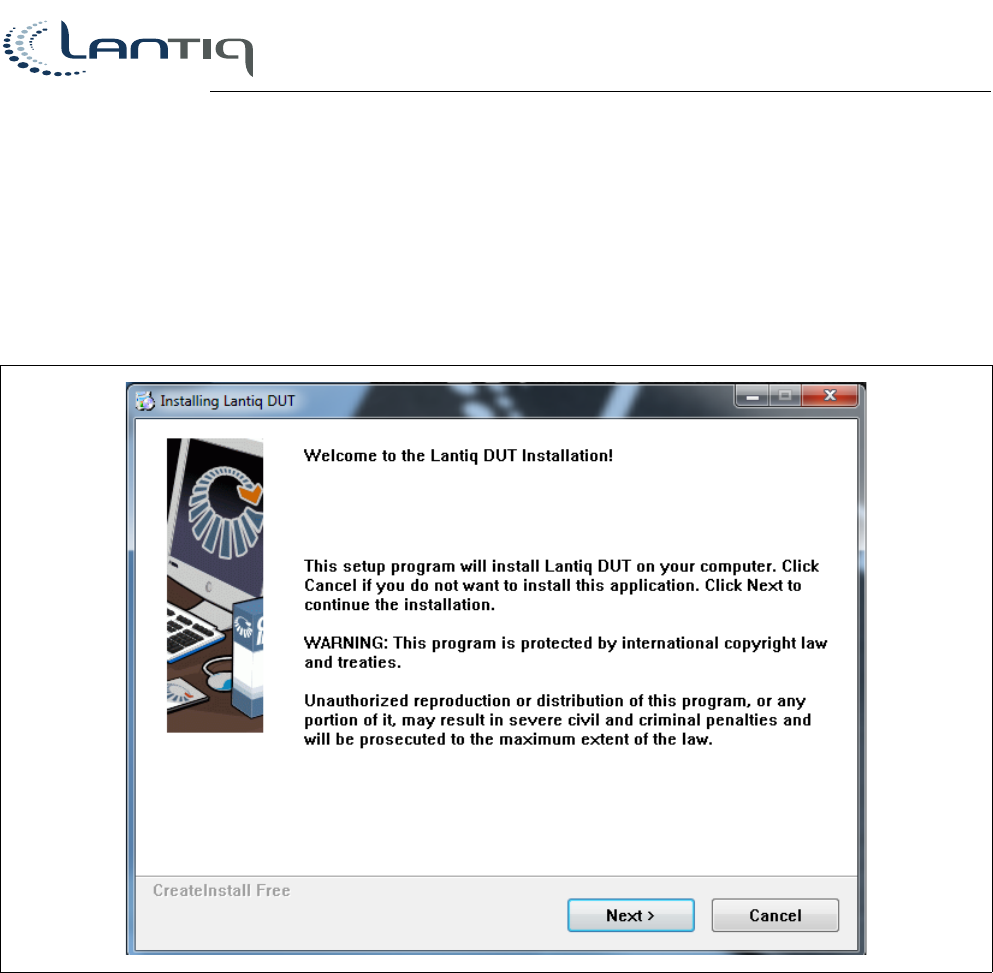
DUT Graphical User Interface
DUT Tool Package
Installing DUT GUI
Confidential
User’s Guide 9 Revision 1.1, 2013-05-06
2 Installing DUT GUI
To install DUT GUI:
1. From the installation media, DUT_setupx.exe.
The DUT Installation window appears.
Figure 1 DUT Installation Welcome Screen
Note: Components required for the installation/upgrade are automatically selected.
2. Ensure the correct elements are selected and click Install.
If an older version is already installed on the computer, you will be prompted to remove the older version before
proceeding.
In C:\Program Files\Lantiq\DUT\
• DUT_GUI.exe - GUI application
• dut_cfg.txt - Configuration file to determine the output power level desired during close loop transmission
operation and basic platform configurations.
• \autoloader\linux_hosts.txt - configuration file that defines the login and password for the platform
• Regulatory Constraints Folder - Contains information for using regulatory constraints mode
• Developers Folder - Contains XXX.h files for integrating dut.dll in other applications
• DUT GUI User Guide.
Other:
• The log for the DUT GUI application, console.txt, is created in the My Documents folder
• A shortcut to DUT_GUI.exe is created on your desktop
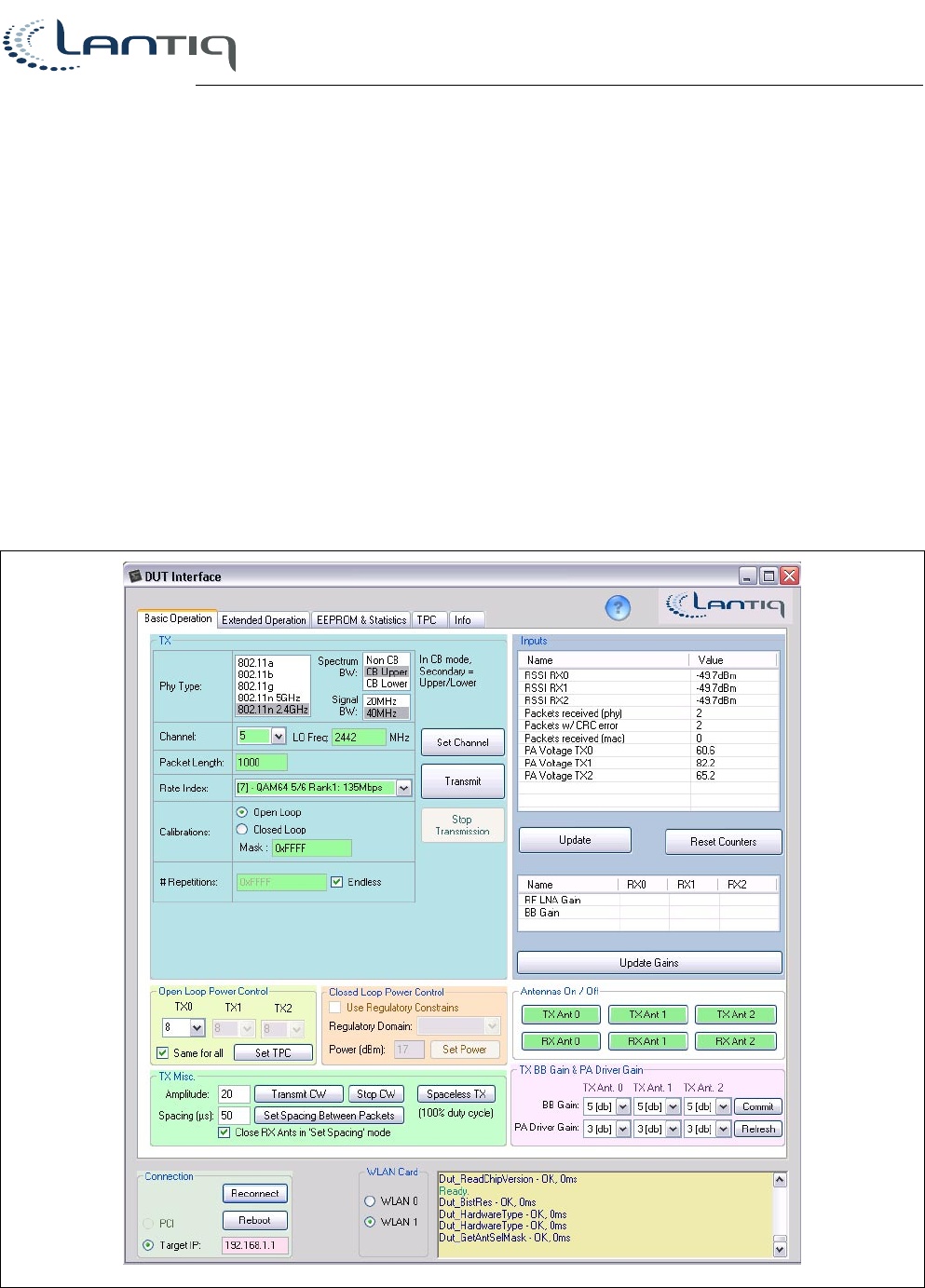
Confidential
DUT Graphical User Interface
DUT Tool Package
Launching DUT GUI
User’s Guide 10 Revision 1.1, 2013-05-06
3 Launching DUT GUI
To launch the DUT GUI application:
1. From the desktop, double click the DUT GUI shortcut.
2. Optionally, change the “dut_cfg.txt Configuration Parameters” on Page 15.
The application tries to connect to the DUT.
• If the DUT was pre-configured for the proper parameters, the connection succeeds and a ready message is
displayed.
• If the connection is not successful, an error message appears. In this case make sure that the proper
parameters and information are correct. For more information on how to troubleshoot an unsuccessful launch,
see “Troubleshooting Launch Errors” on Page 11.
Main screen of the DUT GUI following a successful launch:
Figure 2 DUT GUI Main Screen (Successful Launch)
Note: Please pay attention to the “Ready” message in the messages pane.
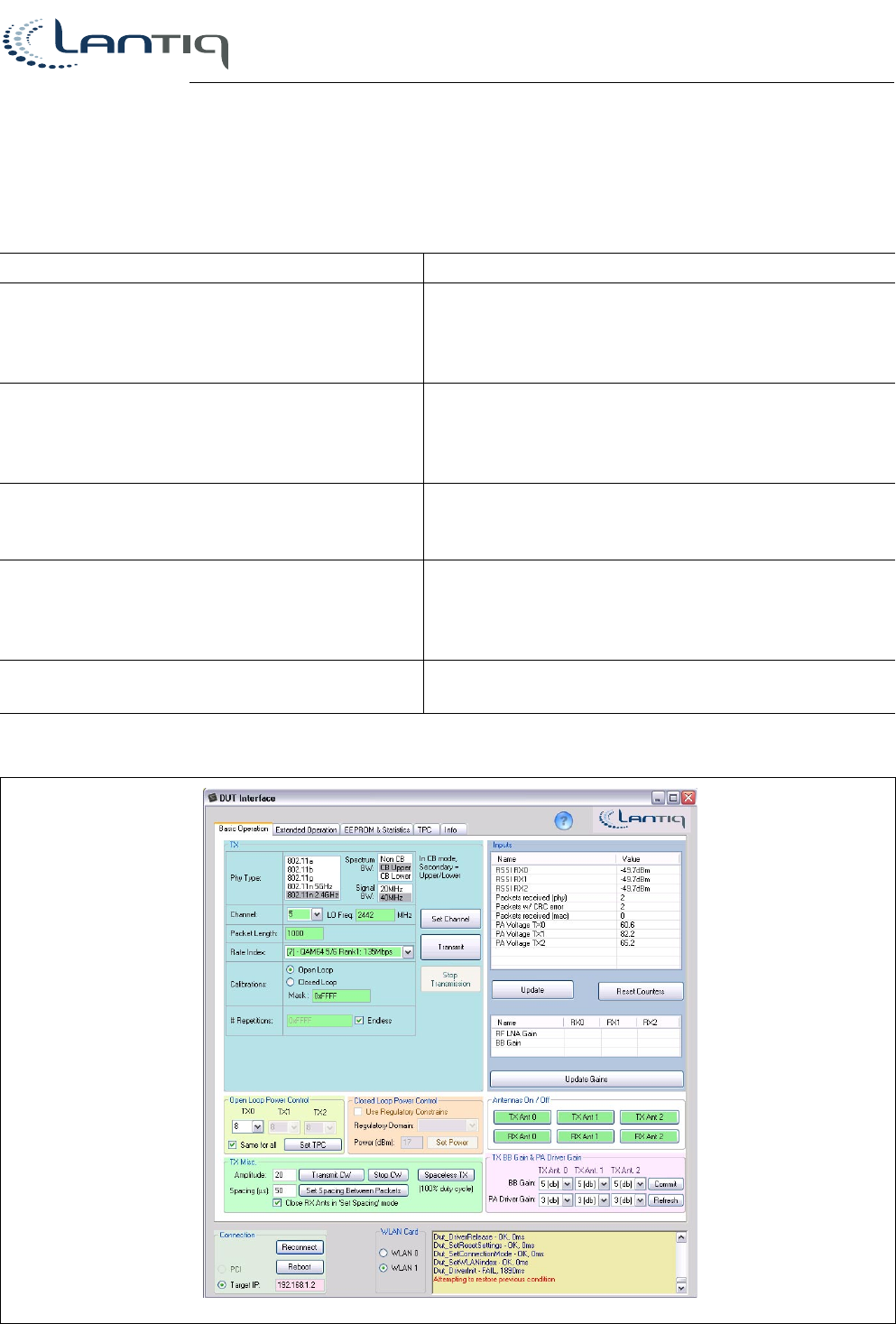
DUT Graphical User Interface
DUT Tool Package
Launching DUT GUI
Confidential
User’s Guide 11 Revision 1.1, 2013-05-06
3.1 Troubleshooting Launch Errors
Possible Cause of Failure Solution
External power supply is not turned on. Close the DUT GUI.
Enter DUT into the host.
Turn on the power supply.
Run the application again.
For a Linux based host, the IP might not be correct. Verify that the IP address is correct and the PC's Ethernet
card is properly configured.
Restart the host.
After approximately 1 minute, press the reconnect button.
Another application (IQFact, DUT GUI) is using the
test driver.
Close the DUT GUI.
Reboot the DUT.
After the DUT is up, restart the DUT GUI application.
Wrong dut_cfg.txt configuration file parameters are
chosen.
Choose the correct HW type and version according to the
platform type.
Make sure that Wlan index in properly selected in case of
dual band concurrent platform.
Wrong Band and channel are configured on initial
usage
Insert appropriate Band/Channel and press the reconnect
button
An example of the main screen of the DUT GUI following an unsuccessful connection:
Figure 3 Main Screen of DUT GUI Application after an Unsuccessful Launch
Table 1 Typical Launch Errors and Solutions
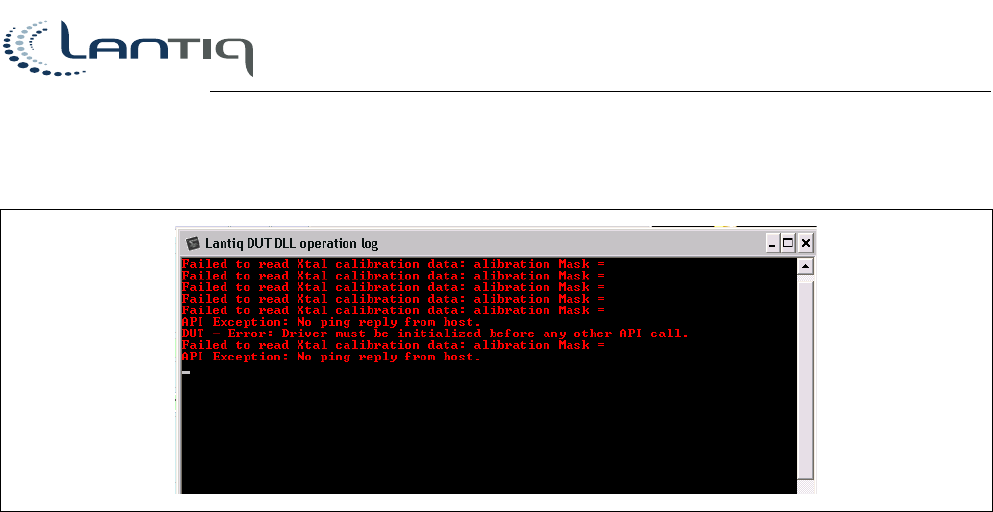
Confidential
DUT Graphical User Interface
DUT Tool Package
Launching DUT GUI
User’s Guide 12 Revision 1.1, 2013-05-06
Note: Please pay attention to the “There is no ping reply” message in the messages pane.
Figure 4 DUT DLL Log
Note: Please pay attention to the “No ping reply from host” message in the log pane.
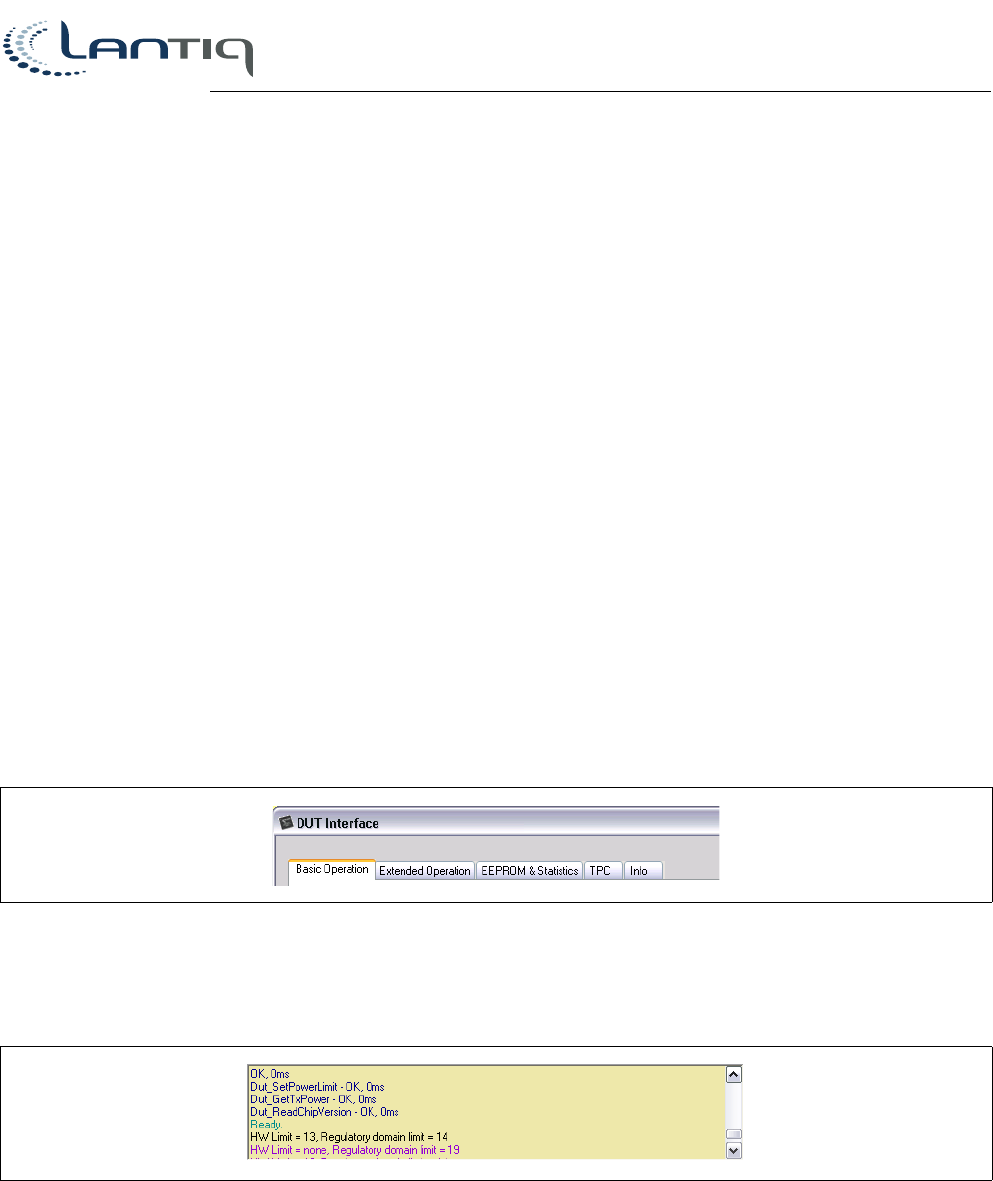
DUT Graphical User Interface
DUT Tool Package
Overview of the DUT GUI
Confidential
User’s Guide 13 Revision 1.1, 2013-05-06
4 Overview of the DUT GUI
The DUT GUI provides the following functions:
4.1 DUT GUI Features
• Change DUT operation to desired channel
• Turn on/off Rx/Tx antennas
• Receive 802.11a/b/g/n packets in nCB/CB Mode and at SISO/MIMO rates
• Transmit 802.11a/b/g/n packets in nCB/CB Mode and at SISO/MIMO rates
• Transmit in Open/Closed loop with Regulatory restrictions
• Read and burn the EEPROM/Flash
• Crystal frequency tuning tool
4.2 The Tab Bar
The DUT GUI includes five tabs:
• Basic Operation - Includes all functions needed to control the receiving and transmission for the DUT
• Extended operation - Includes calibration of the on-board Crystal and an option for future Antenna selection
• EEPROM & Statistics - Includes all functions needed to read and write to the EEPROM along with some
advance options
• TPC - Includes specific calibration data information represented in the EEPROM/Flash
• INFO - Includes information about current system state, such as power-up self test results
Figure 5 DUT GUI Tabs
4.3 Log and Messages Pane
Figure 6 Log and Messages Pane
In the log pane, you can see the status of command execution. Problems are colored in red.
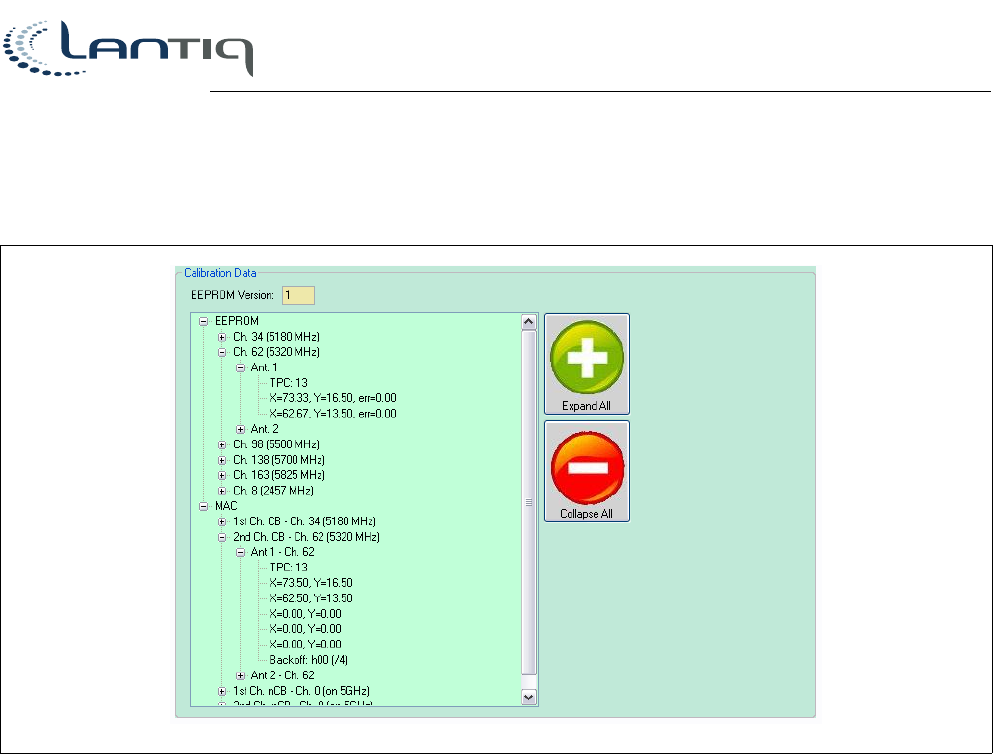
Confidential
DUT Graphical User Interface
DUT Tool Package
Overview of the DUT GUI
User’s Guide 14 Revision 1.1, 2013-05-06
4.4 Calibration Data Screen
Figure 7 Calibration Data Screen
During production testing, TX power calibration is performed for enabling closed loop transmission.
The Calibration Data screen includes the information from the EEPROM which was collected during the
calibration.
The information displayed is for debugging purposes only.
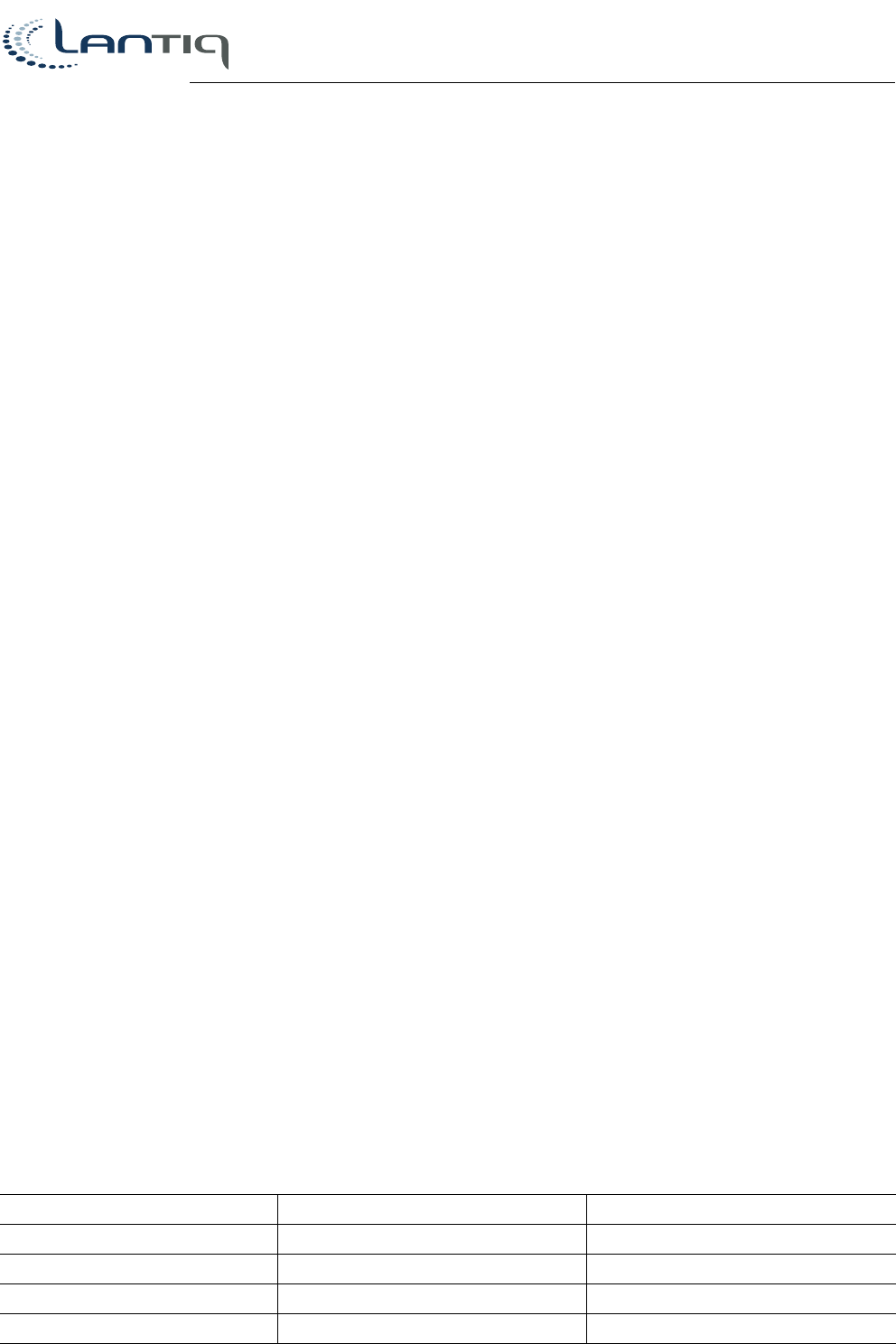
DUT Graphical User Interface
DUT Tool Package
Using the DUT GUI
Confidential
User’s Guide 15 Revision 1.1, 2013-05-06
5 Using the DUT GUI
5.1 Connection Options
On the Basic Operation tab, the connection options are shown. Target IP should be provided. Reconnect and
reboot buttons are available.
Wlan card 0 or 1 can be selected by pressing the desired radio button.
5.1.1 dut_cfg.txt Configuration Parameters
Before starting the connection, specific parameters should be checked in dut_cfg.txt file located in C:\Program
Files\Lantiq\DUT
Reset Hardware Information
Reset_HW_Type0 = 64 //Wlan0 HW type (decimal value)
Reset_HW_Type1 = 49 //Wlan1 HW type (decimal value)
Reset_HW_Revision0 = D //Wlan0 HW revision (decimal value)
Reset_HW_Revision1 = B //Wlan1 HW revision (decimal value)
Set here the HW type and revision of your card. When the EEPROM/Flash is empty, DUT will use those values in
order to load the correct progmodels. DUT supports two hardware types for supporting Dual band concurrent
platforms.
Default WLAN index (0/1)
Default_WLAN_Index = 0 // Two Wlan units are supported 0 or 1
This value defines DEFAULT WLAN and may be overridden by Dut_SetWLANindex API call or Wlan card Wlan0
or Wlan1 radio buttons in DUT GUI.
Crystal Frequency Tuning
ENABLE_XTAL_CALIB = 1
1-Read XTAL tuning value from EEPROM/Flash and enable XTAL calibration
0-XTAL calibration is disabled
XTAL_CAL_BIAS = 0 // Siward is the default (76)
This is the value of the XTAL bias (7 msb of the register).
The following XTAL Bias values are supported:
XTAL Vendor XTAL Type XTAL_CAL_BIAS decimal value
Siward XTL541300A217002 76
Siward XTL571100L137002 74
TXC 7M36090001 70
Kyocera CX32255SBL0FLFA1 79
Table 2 XTAL Bias Values
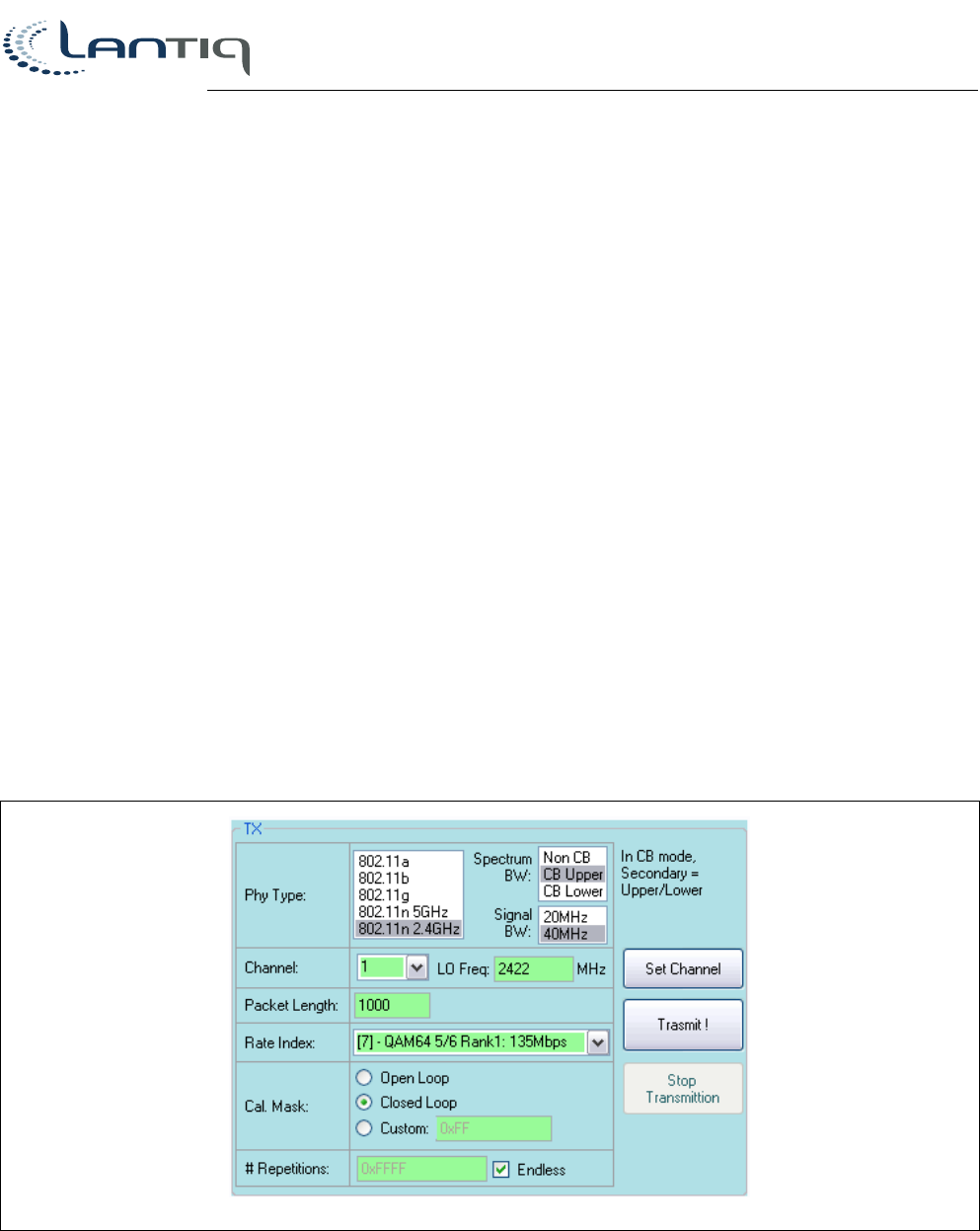
Confidential
DUT Graphical User Interface
DUT Tool Package
Using the DUT GUI
User’s Guide 16 Revision 1.1, 2013-05-06
For example: XTAL_CAL_BIAS = 70 should be used for TXC part.
Non-Volatile memory type
NV_MEMORY_TYPE0 = 1 // Wlan0 memory type
NV_MEMORY_TYPE1 = 1 // Wlan1 memory type
Select the memory type used for storing HW related data.
1 - eeprom, 2 - flash, 3 - efuse
Fast Operation
FAST_RESTART_METHOD = 1
0 - Regular Mode
1- Fast Restart mode
Note:
1. Other parameters in dut_cfg.txt are used for debug and should not be modified.
2. In case improper hardware type was chosen, it may be required to reboot the DUT host (system to which the
device is connected) before reconnection.
5.2 Setting the DUT's Channel
Figure 8 Channel Setting and Transmission Screen
When the DUT GUI is initialized, it sets the DUT to a channel according to the last run. You can select different
parameters and set the DUT's channel using the following options:
• PHY Type - Used to select the operation band. PHY type also depends on the type of packets the DUT will
transmit. However, if a PHY type of 2.4 Ghz is chosen (for example - 802.11b [2] ) the DUT will also receive
and analyze 802.11g and 802.11n packets.
• Spectrum BW (Band width) - Dictates the spectrum bandwidth of the transmission:
– Non-channel Bonding (nCB) = 20 Mhz
– Channel Bonding (CB) = 40 Mhz
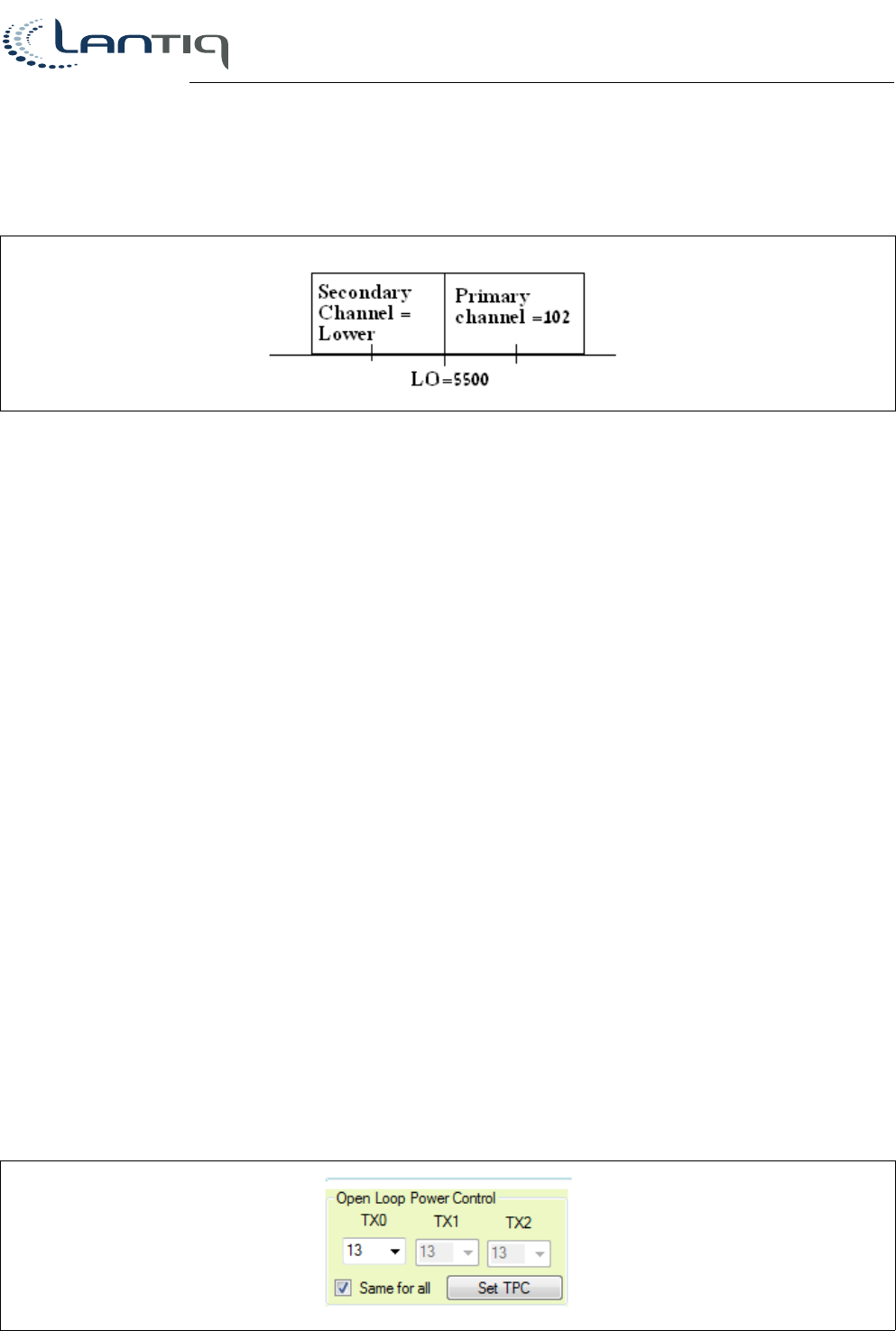
DUT Graphical User Interface
DUT Tool Package
Using the DUT GUI
Confidential
User’s Guide 17 Revision 1.1, 2013-05-06
If CB is used, the selected channel is the primary channel and you need to choose if the secondary channel will
be on the lower or upper side of the primary channel. The DUT GUI automatically calculates the actual frequency
of the DUT's LO according to the channel, the BW, and the location of the secondary channel
Figure 9 Example of Primary and Secondary Channel Selection in CB Mode
• Signal BW - When the 40Mhz spectrum BW is chosen, you can choose between CB (40 MHz) Tx or SSB
(single side band) transmission.
– In SSB mode, all Tx and Rx filters are on 40 MHz BW, LO is according to 40 MHz transmission but the actual
transmitted signal is only in one side of the LO (according to the location of the primary channel)
– The difference from the previous option of 20MHz is the location of the signal in comparison to the LO and
the filters used.
• Channel - Select a channel according to the 802.11n standard definition of channel. LO Frequency will
automatically be calculated according to BW definitions.
• Byte length - The packet length in bytes. The maximum length is 1570 bytes.
• Rate index - According to the MCS table at the 802.11a/b/g/n standards [1]/[2]/[3]/[4]. The list of available rate
indexes will be according to the protocol type chosen.
• Calibration mask - This influences the initial calibration inside the RF chip after setting channel. The value
should be set to 0xFFFF.
• Repetitions - How many times the packet should be transmitted.
Note: 0xFFFF (65535 in Decimal) = endless transmission
• Set Channel button - To instruct the DUT to change channel:
– a.Set all the parameters.
– b.Click Set Channel.
When changing channel all transmissions will be stopped.
• Transmit button - To instruct the DUT to start transmitting:
– a.Set all the parameters.
– b.Click Transmit.
• Stop Transmission button - Use this to instruct the DUT to stop transmitting (only available when DUT is in
Transmit mode).
5.3 Setting Output Power
Figure 10 Open Loop Tx Setting
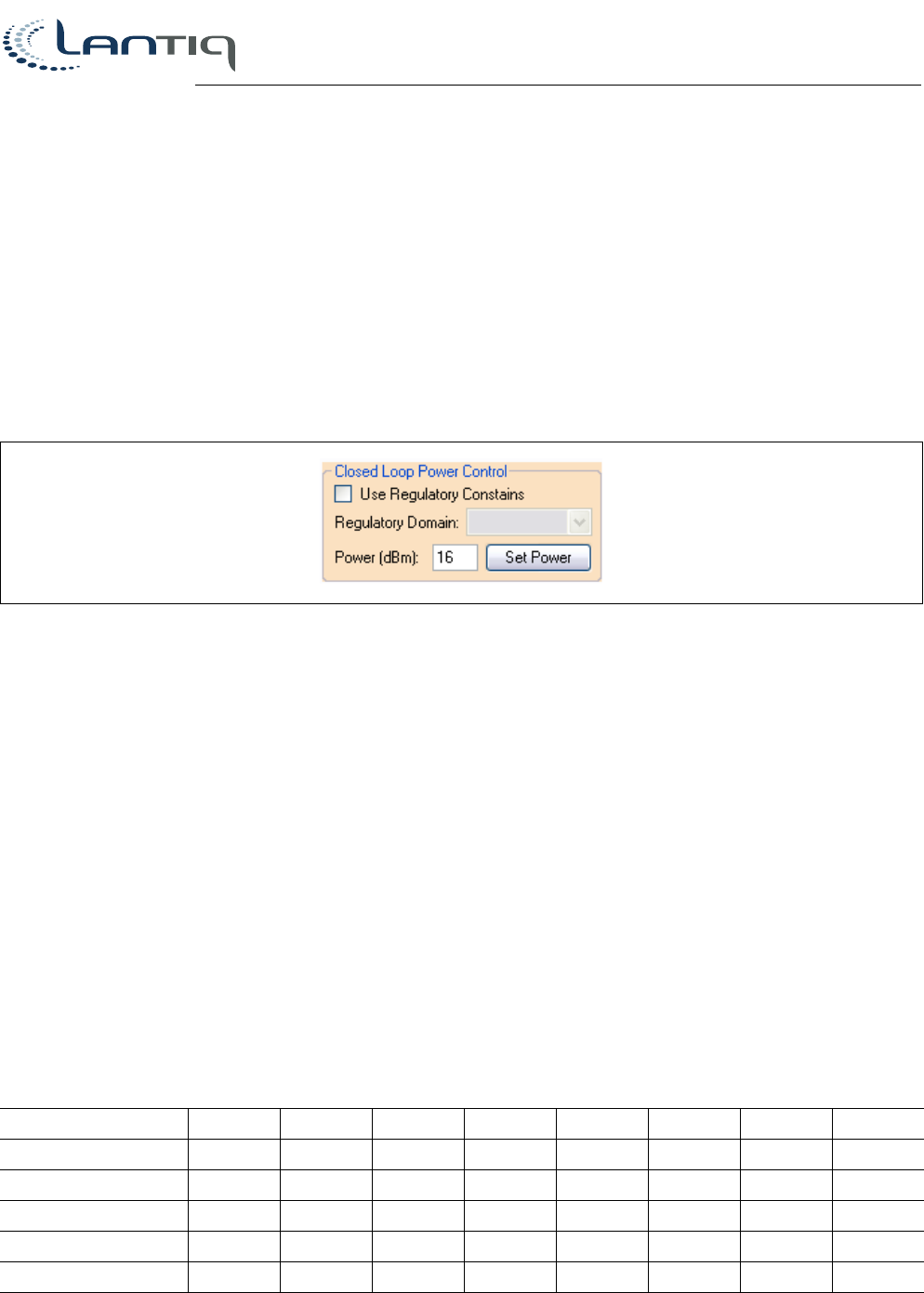
Confidential
DUT Graphical User Interface
DUT Tool Package
Using the DUT GUI
User’s Guide 18 Revision 1.1, 2013-05-06
When transmission is used, you can select several standard and special configurations:
• Set TPC - This option is only available in open loop (see Calibration Mask details in “Setting the DUT's
Channel” on Page 16.
TPC is one of the gain controls of the RF chip. Enter 1, to select transmission with the highest power, any number
greater than 2 will lower the output power. The maximum value for TPC is 30 (lowest power). You can decide
whether to apply the same TPC value to both transmitters or set independent values for each transmitter.
The output power in open loop mode can be changed before or during transmission.
5.4 Closed Loop Output Power Table
Figure 11 Closed Loop Tx Setting
• Set Tx power - In a closed loop transmission (see Calibration Mask details in “Setting the DUT's Channel”
on Page 16, power is set automatically using pre-calibrated information stored in the EERPOM/flash. The
information is stored in the EEPROM/flash during the TPC calibration method implemented by Litepoint's
IQFact application.
• The Tx output power is configured automatically according to the rate (see tables below).
• Output power in closed loop can be changed before or during transmission.
• Close loop power can be set in 1/8 dB resolution example 16.125 dBm, 16.875 dBm etc.
• Power table according to the rate is found and can be adjusted in the file: dut_cfg.txt which is located in
C:\Program Files\Lantiq\DUT.
• There are two options to set the default power per rate. Both are configured using the Use_TPC_Power
parameter option in the dut_cfg.txt file: Constant Power and “Back Off Power” on Page 19.
5.4.1 Constant Power
Use_TPC_Power = 0
Power is determined according to the following table:
MCS Rate 01234567
Const_Power_11a 17 17 16 15 15 15 15 15
Const_Power_11b 19 19 19 19 19 19 19 19
Const_Power_11g 19 19 18 18 17 17 17 17
Const_Power_11n5 17 16 16 15 15 15 15 15
Const_Power_11n24 18 18 17 17 17 17 17
Note: For 802.11n [4], rates 8-15 have the same power as rates 0-7.
Table 3 Constant Power
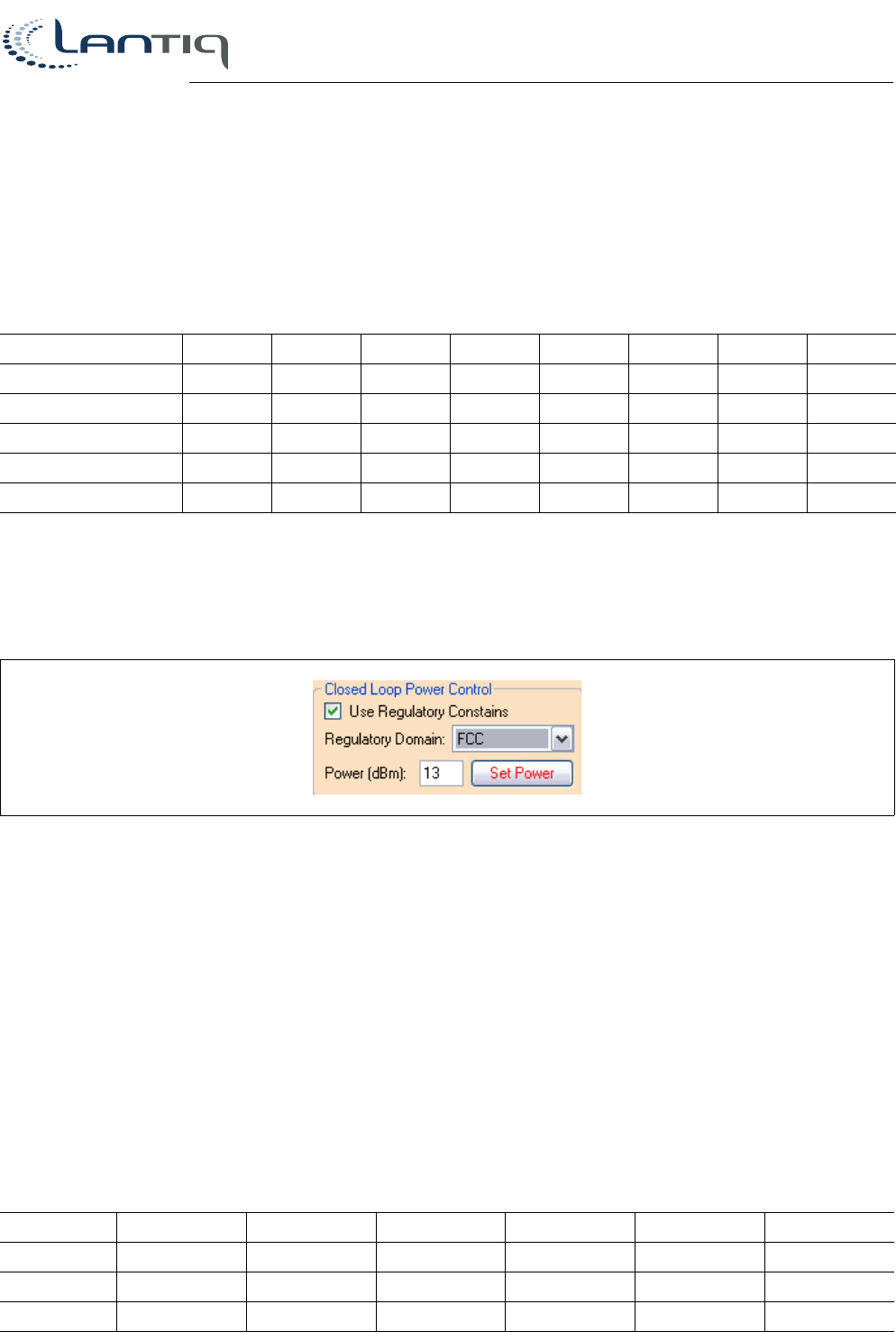
DUT Graphical User Interface
DUT Tool Package
Using the DUT GUI
Confidential
User’s Guide 19 Revision 1.1, 2013-05-06
5.4.2 Back Off Power
Back off power from Max power in the EEPROM
Use_TPC_Power = 1
Power is determined according to the maximum power stored in the EEPROM minus the following back off. The
back off can be modified differently for each rate:
MCS Rate 01234567
TPC_Backoffs_11a 00000012
TPC_Backoffs_11b 00000000
TPC_Backoffs_11g 00000012
TPC_Backoffs_11n5 00000123
TPC_Backoffs_11n24 00000123
5.5 Using Regulatory Constraints in Closed Loop Tx Mode
Figure 12 Regulatory Constraints in Closed Loop Tx Mode
For EMI testing, there is an option to limit the transmitted power according to the EMI standards.
To use this mode:
1. Consider the regulatory (see“Regulatory Limitations” on Page 19) and hardware (see “Hardware
Limitations” on Page 20) limitations.
2. Select the Use regulatory constraints mode.
5.5.1 Regulatory Limitations
Regulatory limitations are imposed by the ETSI, FCC, and Telec standards for different channels and BW.
The reglimits.csv file is provided (in C:\Program Files\Lantiq\DUT\Regulatory_Constrains) with all the FCC, ETSI
and Telec limitation for all the channels. The DUT GUI uses the information in this table to define the max output
power allowed for each of the bands and frequencies. An example is shown in the following table.
Table 4 Back off Power
Table 5 Reg Limits
Band Domain Class Spacing Channel Power Limit Sm Required
5FCC 120 36 17 No
5FCC 120 40 17 No
5FCC 120 44 17 No
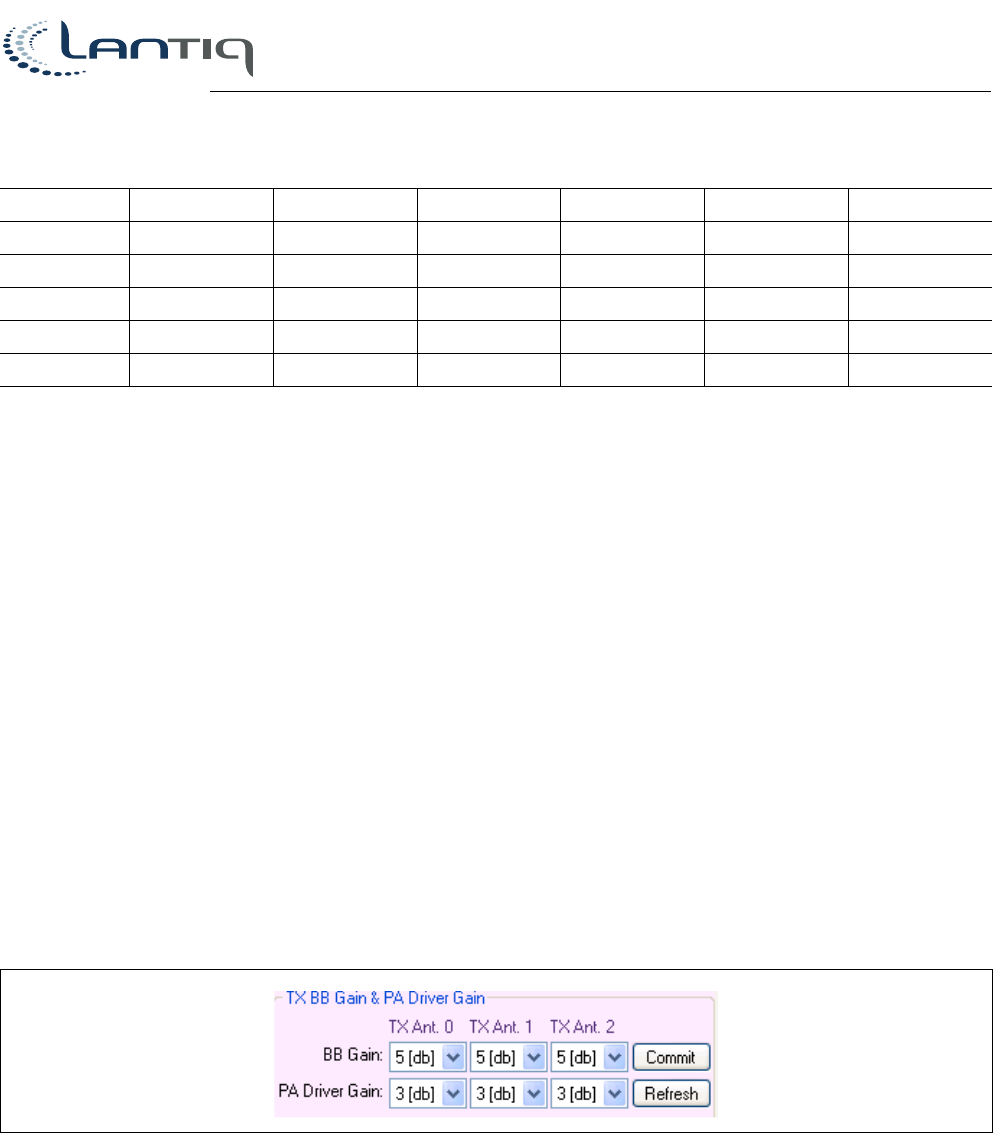
Confidential
DUT Graphical User Interface
DUT Tool Package
Using the DUT GUI
User’s Guide 20 Revision 1.1, 2013-05-06
5.5.2 Hardware Limitations
The hardware limitation are different for every type of board. During EMI certification, for example, an RF board
might need to lower the output power even more than required in the regulation for the specific channel used
because of band edge, 2nd harmonic and other limitations.
The DUT GUI uses information from the supplied limits.ini file according to the HW Type and HW Version
information found in the EEPROM during startup. All known HW types are listed at the top of the ini file.
Example:
[HWTypes]
0x301a_0x8006_0xc4_0x45= GPB-208
0x301a_0x0007_0x30_0x43 = GPB-304
0x301a_0xC007_0x40_0x44= Easy388 family board (WRX RFIC)
If there is no HW limit for the HW used in the specific channel, only the regulatory limits will be taken into account.
DUT GUI will not allow users to change the desired Tx power value more than the limitation described above allow.
After the desired power is changed, click Set power for the change to take effect.
5.6 Changing BB and PA Driver Gains
Figure 13 BB and PA Driver Gain Setting
The DUT GUI allows you to control the TPC attenuator in the RF chip and two additional RF chip internal
amplifiers:
• Base band gain (BB gain) - In the BB side of the RF chip there is an option to boost dB gain by 0, 2.5, or 5
• PA driver gain - In the RF side of the RF chip there is an option to gain 0 or 3 dB using the PA driver gain control
The system automatically determines the initial value of both gains and this might differ between frequencies and
bands.
Note: This Gain change option is applicable for XWAY™ WAVE300 devices only.
5FCC 120 48 17 No
5FCC 220 52 24 Yes
5FCC 220 56 24 Yes
5FCC 220 60 24 Yes
5FCC 220 64 24 Yes
Table 5 Reg Limits (cont’d)
Band Domain Class Spacing Channel Power Limit Sm Required
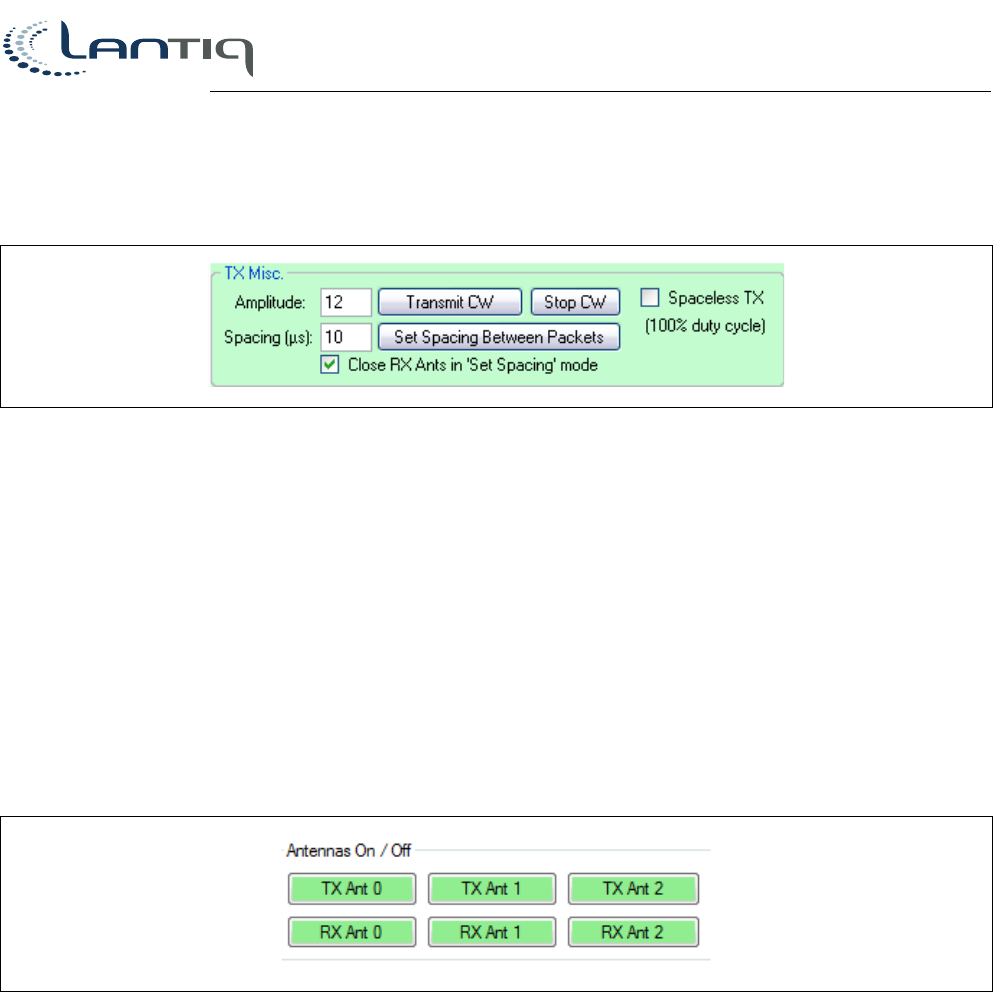
DUT Graphical User Interface
DUT Tool Package
Using the DUT GUI
Confidential
User’s Guide 21 Revision 1.1, 2013-05-06
5.7 Transmitting in CW Mode and Changing IFS Section
Figure 14 Transmitting in CW Mode and Changing IFS Section
• CW mode - To set the DUT to transmit in CW mode, define the CW amplitude and click Transmit CW. To stop
the transmission, click Stop CW.
Note: The amplitude is just an index and is not in dBm. The higher the index used, the higher the CW's amplitude.
• Changing spacing - To change the IFS (inter frame spacing), set the spacing in µSec and click Set Spacing
Between Packets. When changing the spacing, Rx Antennas are closed to verify that the IFS isn't determined
also because of received packets for different 802.11 station in the area.
• Space-less transmission - When this mode is selected, the transmission coming out will be continual, meaning
there will be no idle time - 100% Duty cycle. This is not a standard mode of operation and some time is required
for certification testing.
5.8 Setting Antenna Configuration
Figure 15 Antenna On/Off Section
Lantiq's WiFi solution includes three transmit and three receive antenna. You can turn off one or more of the
antenna by clicking the relevant button as shown above.
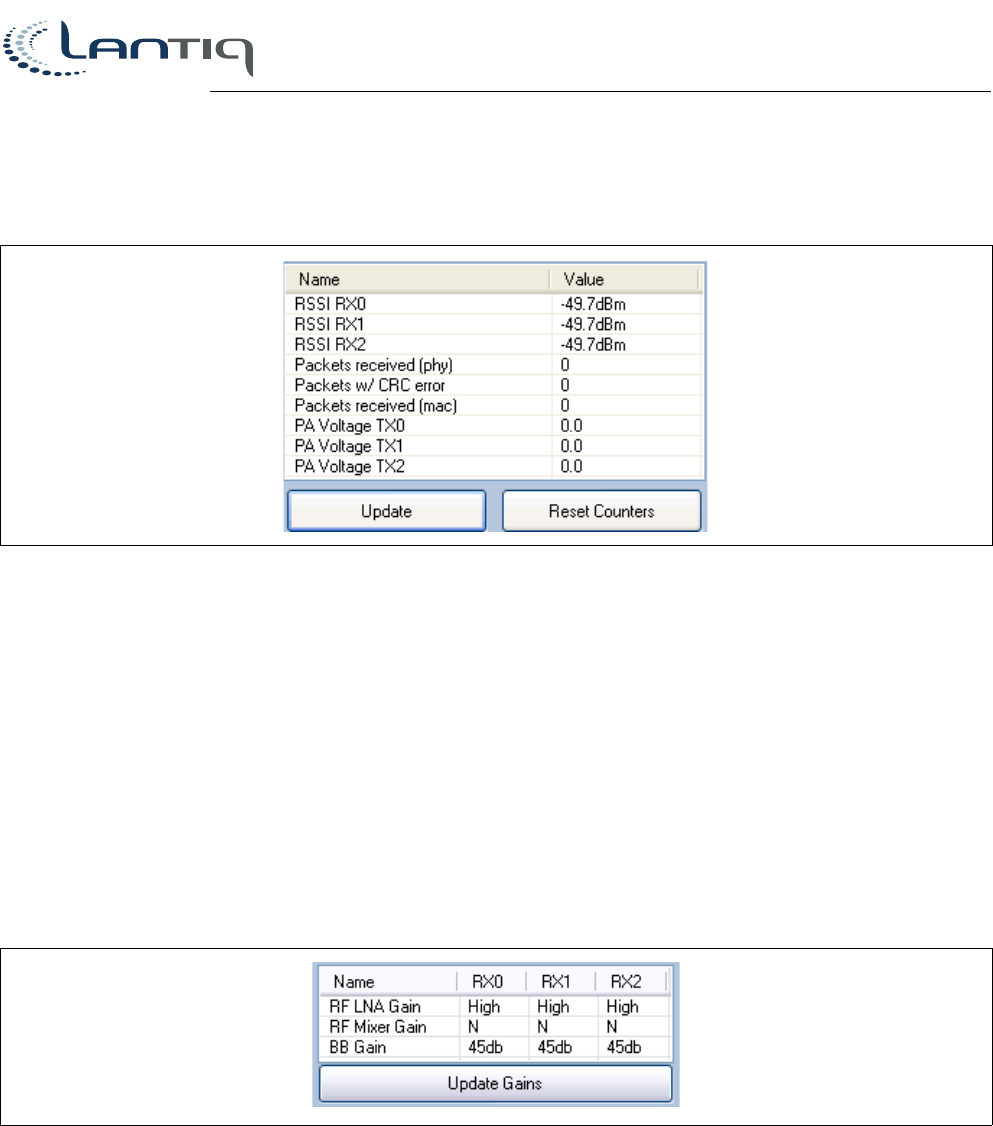
Confidential
DUT Graphical User Interface
DUT Tool Package
Using the DUT GUI
User’s Guide 22 Revision 1.1, 2013-05-06
5.9 Rx Information and PA Detector Information
Figure 16 RSSI, Packets Counter and PA Detector Information
When you click Update, the following are read from the DUT:
• RSSI values (signal strength) for each of the three Rx antennas (in dBm)
• Packets received counters (PHY level) - There are two readings:
– the upper is for the number of packet received in the modem
– the lower is for the number of packets received in the modem with CRC error.
• Packets received counter (MAC) - This counter is not used.
• PA voltage - Returns the power indication from the PA detector during transmissions.
The PA detector information enters the BB chip through an 8 bit A/D. The reading in the DUT GUI is an average
of several readings and the numbers are on a scale of 0-255. Usually, each step represents approximately 10 mV.
5.10 Chip Gain Information
Figure 17 Chip Gain Information
When you click Update Gains, the following are read from the DUT:
•RF LNA Gain
• RF Mixer Gain
• BB Gain
Note: The gain information is applicable for XWAY™ WAVE300 devices only.
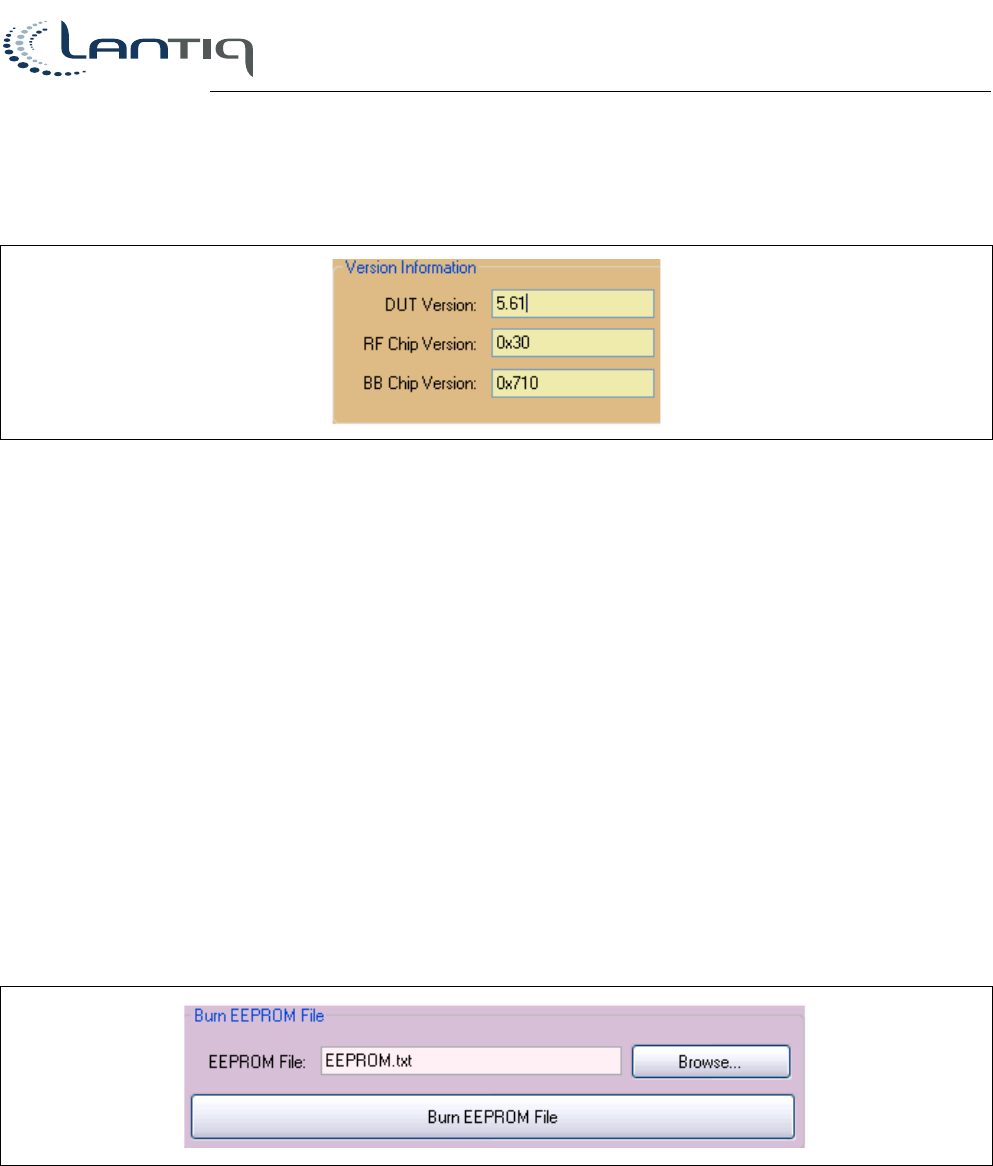
DUT Graphical User Interface
DUT Tool Package
Using the DUT GUI
Confidential
User’s Guide 23 Revision 1.1, 2013-05-06
5.11 DUT and Chip Versions
Figure 18 Version Information
During startup, the DUT GUI reads the RF and BB chip versions from the relevant HW registers in the chips and
displays it together with the DUT GUI application version.
The RF chip version 0x30 indicates XWAY™ WAVE300 (PSB 8301, PSB 8304) RFIC
The BB chip version 0x710 indicates XWAY™ WAVE300 (PSB 8221, PSB 8231) BBIC
5.12 Reading and Writing the EEPROM/Flash
5.12.1 Configuring EEPROM/Flash Area Size
EEPROM/Flash area size may be configured via dut_cfg.txt file.
It is possible to specify EEPROM/Flash area size in bytes by the means of parameter EEPROM_Size_Bytes. The
default value is 1024 bytes.
5.12.2 Burning a File to EEPROM/Flash
Figure 19 EEPROM/Flash Burning Section
The EEPROM/Flash contains important information for operation of the module. The information includes:
• PCI information (including Vendor ID and Device ID).
• HW Type and HW version information - To determine which firmware to load to the module.
• TPC calibration information.
Attention: A module will not work without correct values in the EEPROM/Flash for all three areas
mentioned above.
The EEPROM/Flash is usually burned only once, during the production testing. Information burned into the
EEPROM/Flash consists of a text file in the following form:
<Address><data>
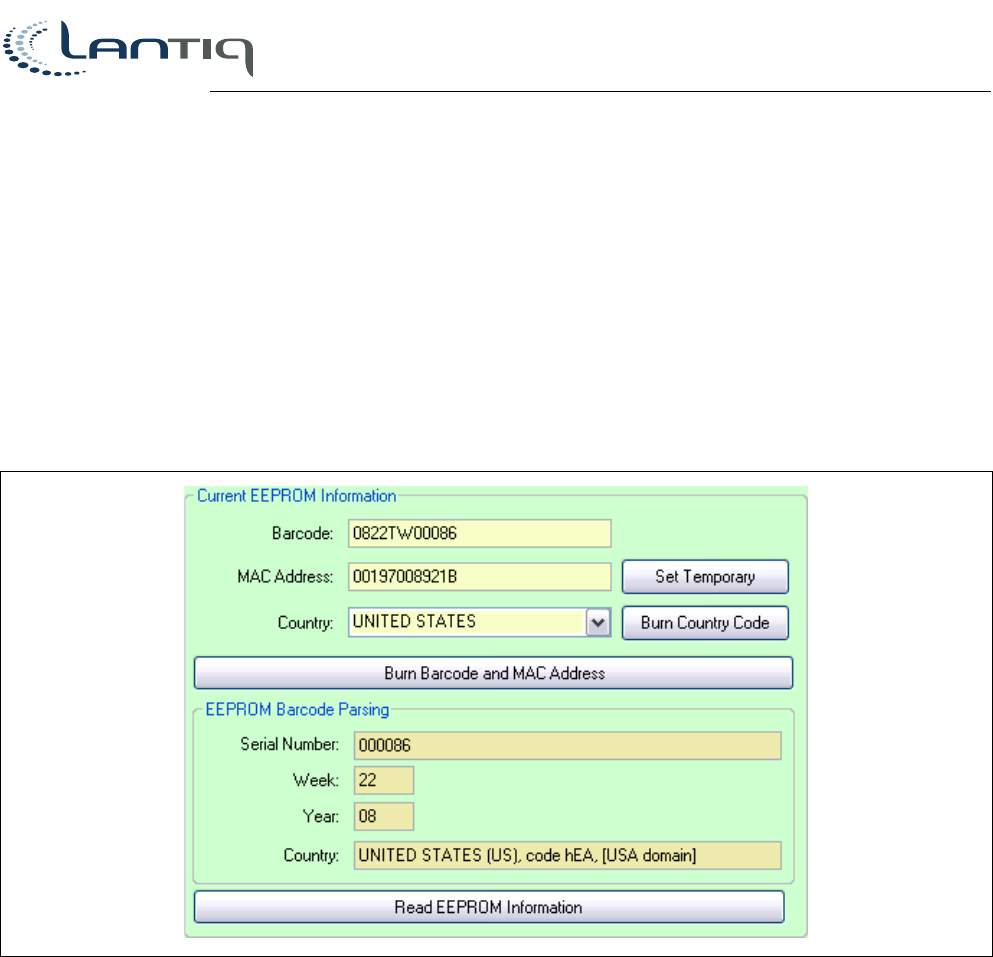
Confidential
DUT Graphical User Interface
DUT Tool Package
Using the DUT GUI
User’s Guide 24 Revision 1.1, 2013-05-06
Example:
0000 FC1B
0002 CD00
0004 0000
0006 0100
Attention: Burning the wrong information into the EEPROM/Flash can cause the module to stop working
without the possibility to reverse the damage.
5.12.3 Working with Serial Numbers and MAC Addresses
Figure 20 MAC Address and S/N Information R/W
The EEPROM/Flash includes MAC address, country code and serial number information burned in the production
testing and assembly.
Using the DUT GUI, the following information can be read from the EEPROM/Flash:
• MAC address - is in 12 hexadecimal digits
• Serial number can be in 2 following formats
• YYWWMMNNNNNCC where
– YY - Year of manufacture
– WW - Week of manufacture
– MM - Two letter initials of assembly house (this information is not stored in the EEPROM/Flash)
– NNNNN - Five digits of sequential serial number
– CC (optional) - Short country name (two-letters), as listed in the 'Country' drop list, used for regulatory
domain limitations.
– For full country code list see Appendix C - Country Codes
Example: 0825ML12345US
• KKKKKYMNEXXXXXX
– KKKKK - 5 digits of module name.

DUT Graphical User Interface
DUT Tool Package
Using the DUT GUI
Confidential
User’s Guide 25 Revision 1.1, 2013-05-06
– Y - Year of manufacture
– M - Month of manufacture (A=October, B=November, C= December)
– N - board revision
– E - Regulatory domain (Example: E= ETSI)
– XXXXXX- Five digits of sequential serial number
Example: AN66085NE123456
The following options are available in this section:
•Read EEPROM/Flash Information - Read current S/N, country code and MAC address information from the
EEPROM/Flash
•Burn Barcode and MAC address - Write the S/N (barcode) and MAC address information provided by the
user to the EEPROM/Flash
•Set temporary - Give the module a temporary MAC address. This MAC address will not be saved into the
EEPROM/Flash but can be used to filter received packets without this MAC address.
•Burn Country Code - Write the chosen country code to the EEPROM/Flash.
The Rx packets counter for packets received with this MAC address can be found in the first tab of the application
in the “Rx information” section.
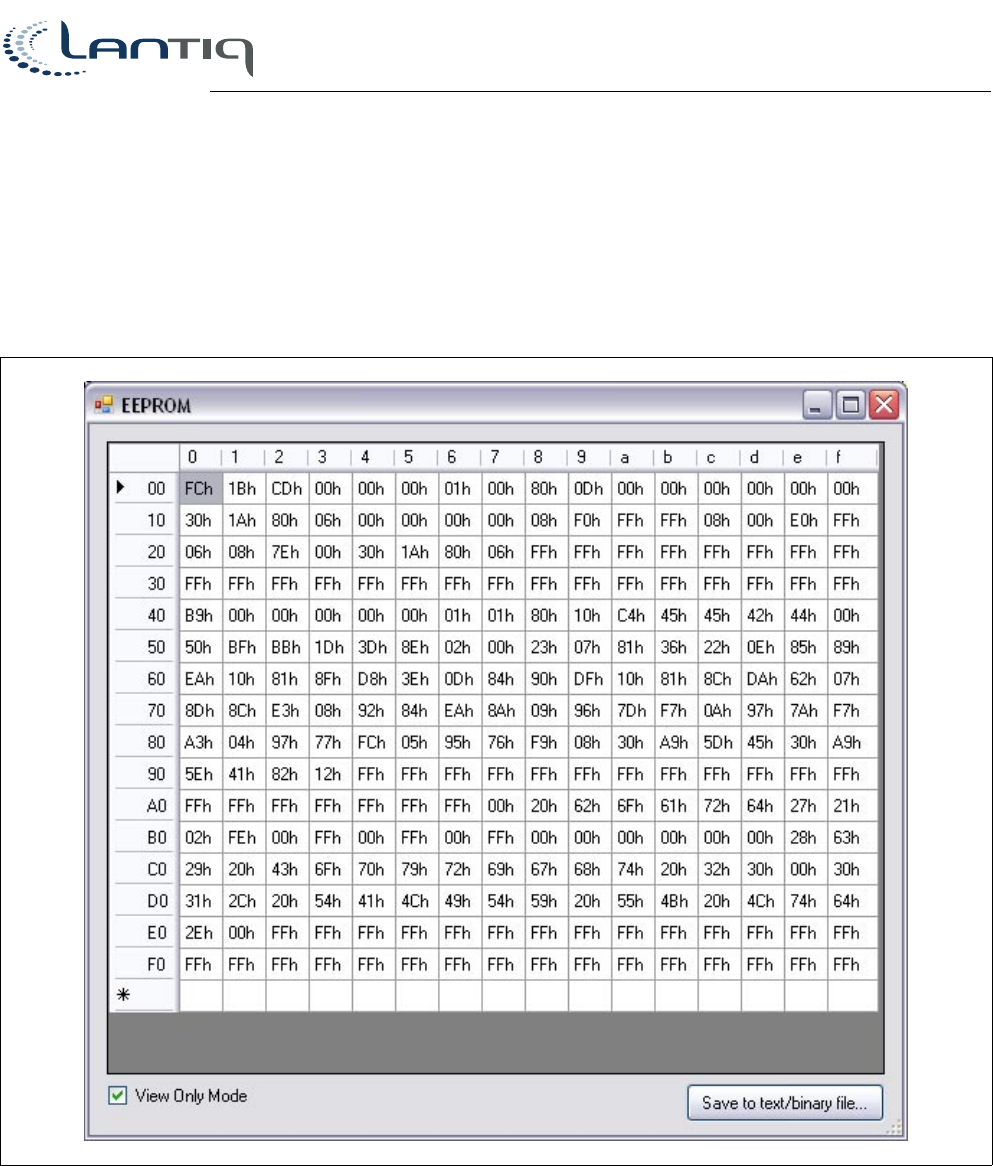
Confidential
DUT Graphical User Interface
DUT Tool Package
Using the DUT GUI
User’s Guide 26 Revision 1.1, 2013-05-06
5.12.4 Changing Raw Content
To view EEPROM/Flash raw data:
1. From the third tab, click View / Change/ Save EEPROM…
The following screen appears.
Figure 21 EEPROM/Flash Raw Data
The information is shown as two hexadecimal digits for each address (hexadecimal marked by the 'h' after the two
digits). For example, 1Ah (equivalent to 0x1A).
To edit the EEPROM/Flash raw data:
1. Clear the View Only Mode checkbox.
2. Edit the EEPROM/Flash content for each cell separately.
Burning is performed when the cursor moves from the changed cell
3. To save all the EEPROM/Flash content to a file, click Save to text/binary file.
The file can be loaded with the “burning EEPROM file” function in the second application tab
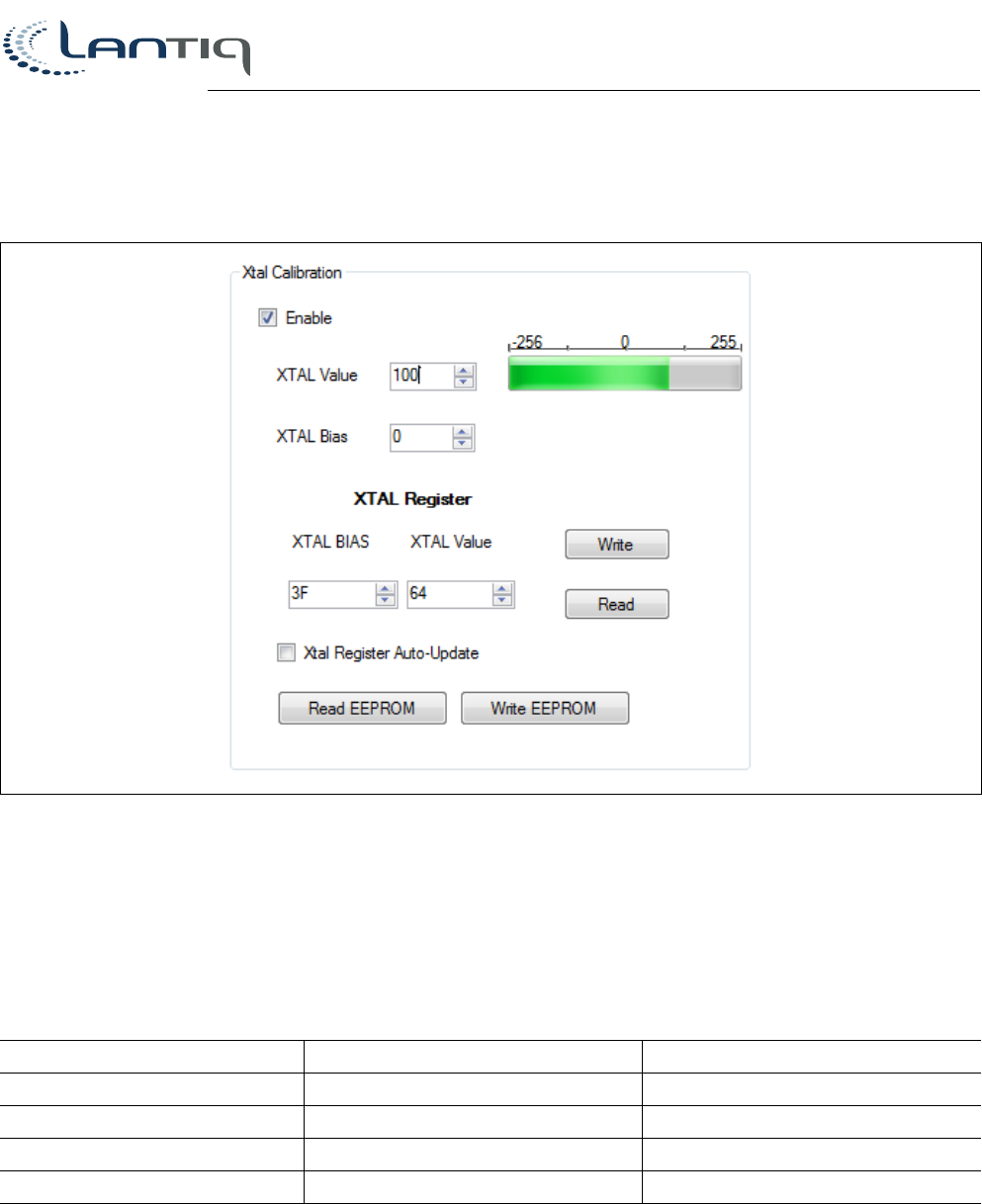
DUT Graphical User Interface
DUT Tool Package
Using the DUT GUI
Confidential
User’s Guide 27 Revision 1.1, 2013-05-06
5.13 XTAL Calibration
This form can be found in the Extended operation tab.
Figure 22 XTAL Calibration
Two XTAL configuration fields are available:
• XTAL Value - tuning value register
• XTAL Bias - drive strength value (the XTAL Bias field is supported in XWAY™ WRX312/313 RFIC only)
These fields can be read and written to the RFIC and EEPROM/Flash and used for proper XTAL operation.
The following XTAL Bias values are supported:
XTAL Vendor XTAL Type XTAL_CAL_BIAS decimal value
Siward XTL541300A217002 76
Siward XTL571100L137002 74
TXC 7M36090001 70
Kyocera CX32255SBL0FLFA1 79
Table 6 XTAL Bias Values

Confidential
DUT Graphical User Interface
DUT Tool Package
Available Functions in mt_dut.dll
User’s Guide 28 Revision 1.1, 2013-05-06
6 Available Functions in mt_dut.dll
All Int functions will return a value:
• If a function is used to receive information (counter etc.) the value will be returned
• In all other cases, the function will return “1” for success or “0” for fail
Parameters for all functions have names as defined in the header file “DUT_API.h”. For example:
#define DUT_MODE_B 1
#define DUT_MODE_N 2
6.1 Init Process
Dut_SetConnectionMode(int connectionType, const char* optIPaddr);
// Set the connection mode to the device. 0=PCI, 1=UART,2=SPI,3=LINUX.
IP addr should be specified for linux connections, can be null otherwise This
function should be called BEFORE Dut_DriverInit.
Int Dut_DriverInit(void) // Return 1 after success
Int Dut_DriverVersion(double *version); // returns the version to the location of
the pointer
Int Dut_SetWLANindex(int wlanIndex);
// In case of concurrent dual-band board, use this function before connection or
reconnection in order to choose the needed WLAN card index - 0 or 1, where 0 is the
default. Call this function AFTER calling Dut_SetConnectionMode
Dut_BistRes(int* BistRes); //Reads results of the BIST
6.2 Calibration Process and Tx Tests
Int Dut_SetChannel(int Mode, int band, int CBMode, int channel, BYTE CalibrationMask)
// mode={a,b,g,n}, Band={2400,5000}, CBMode={20,40} channel_index (not the actual
frequency) CalibrationMask - in Hexadecimal
Int Dut_ChangeScramblerMode(int mode) // {0 ,1}
Int Dut_SetTPC (int TPC) // {25,..,2}
Int Dut_TxPackets (int Mode, int RateIndex, , int CBMode, int Length, int
repetitions) // mode={a,b,g,n}, rate={MSC table}, CBMode={20,40}, length in byte,
repetitions - number of packets or 0xFFFF for endless transmission.
Int Dut_EndTxPackets (Void)
Int Dut_ReadVoltageValue (double* voltages) // Returns the power values in Volts for
both Tx antennas to the pointer of the value array.

DUT Graphical User Interface
DUT Tool Package
Available Functions in mt_dut.dll
Confidential
User’s Guide 29 Revision 1.1, 2013-05-06
Int Dut_SetPower(int power); // Sets the Tx power for close loop only. The value is
the desired Tx power per antenna in dBm. The function itself does not change the
power: you must call this function before calling Dut_TxPackets.
Int Dut_SetPowerFloat(float power); // The float version can received more accurate
values (in *1/8db)
6.3 Burning the EEPROM
Int Dut_BurnEEPROM (DWORD Address, DWORD length, const BYTE* value) // Burning
information into the EEPROM.
• The address is in hexadecimal.
• The length is in bytes.
• The value is the string in hexadecimal.
Examples:
Dut_BurnEEPROM (C4, 2, FFAF)
Dut_BurnEEPROM (2D, 4, 01F499A3)
Int Dut_ReadEEPROM (DWORD address, DWORD length,BYTE* data); // Read data from the
EEPROM, at a specified address. Length is the number of bytes.
Int Dut_Burn_MAC_Address (const BYTE *mac_address) // Used to burn the MAC address
(length of 6 bytes).
Int Dut_Burn_Date (int year, int week) // Used to burn the date of the mPCI
production.
Int Dut_Burn_SN (DWORD SN) // Used to burn the S/N (3 Bytes)
Int Dut_Burn_File (const char* filename) // Used to burn file with address and
information to the EEPROM. The file should be in the form of:
<Address> <Data>
Example:
0040 AAFF
Dut_Burn_File can also be called instead of Dut_DriverInit, which in this the file will be burned before the
init process first reads the EEPROM.
Int Dut_BurnInfo(const char* barcode, const BYTE* macAddr, const char* filename) //
One function that burns the S/N from the barcode, the MAC address, and the EEPROM
file.
Int Dut_Burn_Cal_Data (const Dut_CalDataStruct* pCarStr) // Used to burn the
calibration data. The structure is in the form of:
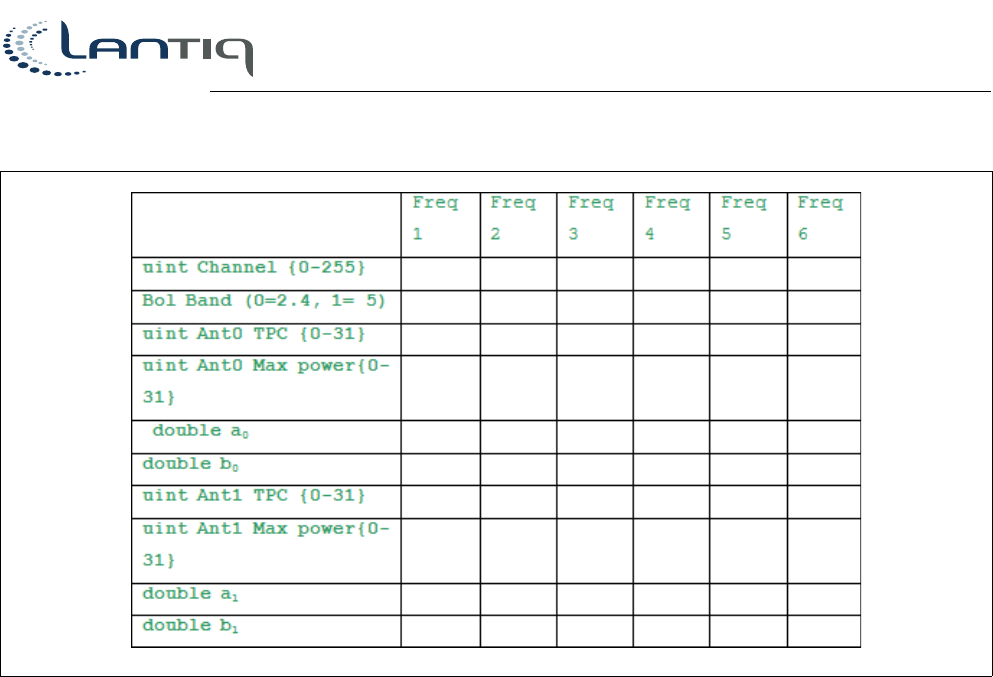
Confidential
DUT Graphical User Interface
DUT Tool Package
Available Functions in mt_dut.dll
User’s Guide 30 Revision 1.1, 2013-05-06
Figure 23 Burn Calibration Structure
6.4 EEPROM Burning New Calibration Method Function
extern MT_RET PASCAL Dut_EEPROM3_Burn_Cal_Data(const Dut_CalDataStruct3*
inCalArray, Dut_CalDataStruct3* outCalArray, int numStructures);
// Burn calibration data using the Dut_CalDataStruct3 for EEPROM Version 3 (defined
// above)
// int numStructurs - # of Dut_AntCalDataStruct3 structures in calArray (2.4 + 5 GHz)
// outCalArray is an optional parameter (can be NULL). If specified, the function
// fills the outCalArray with the linear correlation (LR) results.
// You can use the function Dut_EEPROM3_Test_Cal_Data to verify the LR results for
// part or all of the structures before burning.
extern MT_RET PASCAL Dut_EEPROM3_Test_Cal_Data(const Dut_CalDataStruct3*
inCalArray, Dut_CalDataStruct3* outCalArray, int numStructures);
// Same as Dut_EEPROM3_Burn_Cal_Data but without burning to the EEPROM.
6.5 Sensitivity Check
Int Dut_SetMACAddress(const BYTE* macAddr);
// Sets the MAC address for the testing procedure. Does NOT burn to EEPROM. macAddr
is a BYTE[6] array. This function can and should be called before the call to
Dut_DriverInit(). It sets the Rx filter in the lower Mac for packets only in this
MAC address.
Int Dut_SetRxAntenna(int rx_antenna_mask);

DUT Graphical User Interface
DUT Tool Package
Available Functions in mt_dut.dll
Confidential
User’s Guide 31 Revision 1.1, 2013-05-06
// options = {001, 010, 100, 011, 101, 110, 111}. Returns 1 following a success.
Int Dut_PHYPacketsCounter (unsigned int* packetsCounters)
// Returns the current value of the received packet counter and CRC error counter.
Read before and after transmission. Values will be returned in decimal to the
location of the array. The array should be composed of two values of uint type. The
first is for the packet counter and the second is for the CRC error counter. This
function returns the counters from the PHY layer and does not filter packets
according to MAC address.
Int Dut_MACPacketsCounter (unsigned int* packetsCounters)
// As above, but returns the counter from the lower MAC level. Packets are filtered
according to the MAC address set in the MAC (by using the function Dut_SetMACAddress.
Int Dut_ResetPacketsCounter ()
// Resets the packets and CRC error counters.
Int Dut_RSSIVector (double* RSSI) // Returns the RSSI value of three Rx antennas at
the time of the call to the location of the array. The array should be composed of
3 values of double type. Values are in dBm.
6.6 Finalize the Test
Int Dut_DriverRelease(void);
// Used to terminate your driver control when you have allocated some resources, e.g.
memory. Can be just a dummy return if your driver has nothing to release.
6.7 Others
Int Dut_WriteReg(DWORD address, DWORD Data, DWORD mask); // For the BB chip
Int Dut_ReadReg(DWORD address, DWORD* pData, DWORD mask); // For the BB chip
Int Dut_ReadRFReg(DWORD address, DWORD* pData, DWORD mask); // For the RF chip
Int Dut_WriteRFReg(DWORD address, DWORD data, DWORD mask); // For the RF chip
Int Dut_ReadChipVersion(DWORF* RF_chip_version, DWORD* BB_chip_version)
Int Dut_ChangeRFChipMode(DWORD mode);
// Changes the mode of operation of the RF chip. In all modes which are not listen,
the gen risc is disabled. To re-enable, you must return to listen mode.
Possible options are:
#define DUT_RF_MODE_LISTEN 0xF77 // Tx turned off
#define DUT_RF_MODE_STANDBY 0x800 // Only LO is kept on
#define DUT_RF_MODE_POWERDOWN 0

Confidential
DUT Graphical User Interface
DUT Tool Package
Available Functions in mt_dut.dll
User’s Guide 32 Revision 1.1, 2013-05-06
Int Dut_ReadRFGain(BYTE* RF_Gain_Values); // Read RF Gain - RF_Gain_Values must be
an array of 6 bytes with:
0 - RX0_LNA_Gain
1 - RX0_MIXER_GAIN_6DB
2 - RX1_LNA_Gain
3 - RX1_MIXER_GAIN_6DB
4 - RX2_LNA_Gain
5 - RX2_MIXER_GAIN_6DB
Int Dut_ReadBBGain(int* BB_Gain_Values); // Read BB Gain - BB_Gain_Values must be an
array of three integers for each antenna - returns total of LPF1+LPF2+VGA in db
Int Dut_ReadDetector(BYTE* detector_values); // Read Detector - detector_values must
be an array of four bytes:
0 - PLL_Lock
1 - THD0 (Threshold detector RX0 output)
2 - THD1 (Threshold detector RX1 output)
3. - THD2 (Threshold detector RX2 output)
"Int Dut_ReadVoltageValueEx(double* pVoltage, int numSamples) // Same as
ReadVoltageValue, numSamples - # of samples for each antenna for averaging. Default
value for numSamples (used in Dut_ReadVoltageValue) function is 35
Tx Gains Set/Get for each TX antenna:
Int Dut_SetTxGains(int* bbGains, int* driverGains);
Int Dut_GetTxGains(int* bbGains, int* driverGains);
// Parameters:
// bbGains - array of 2 ints (for each TX ant). Each value can be 0 for 0[db], 1 for
2.5[db] and 2 for 5[db]
// driverGains - array of 2 ints (for each TX ant). Each value can be 0 (Low) or 1
(High)
Dut_StopRISC() // Stops the GenRISC processor (PHY)
Dut_StartRISC() // Starts the GenRISC processor (PHY)
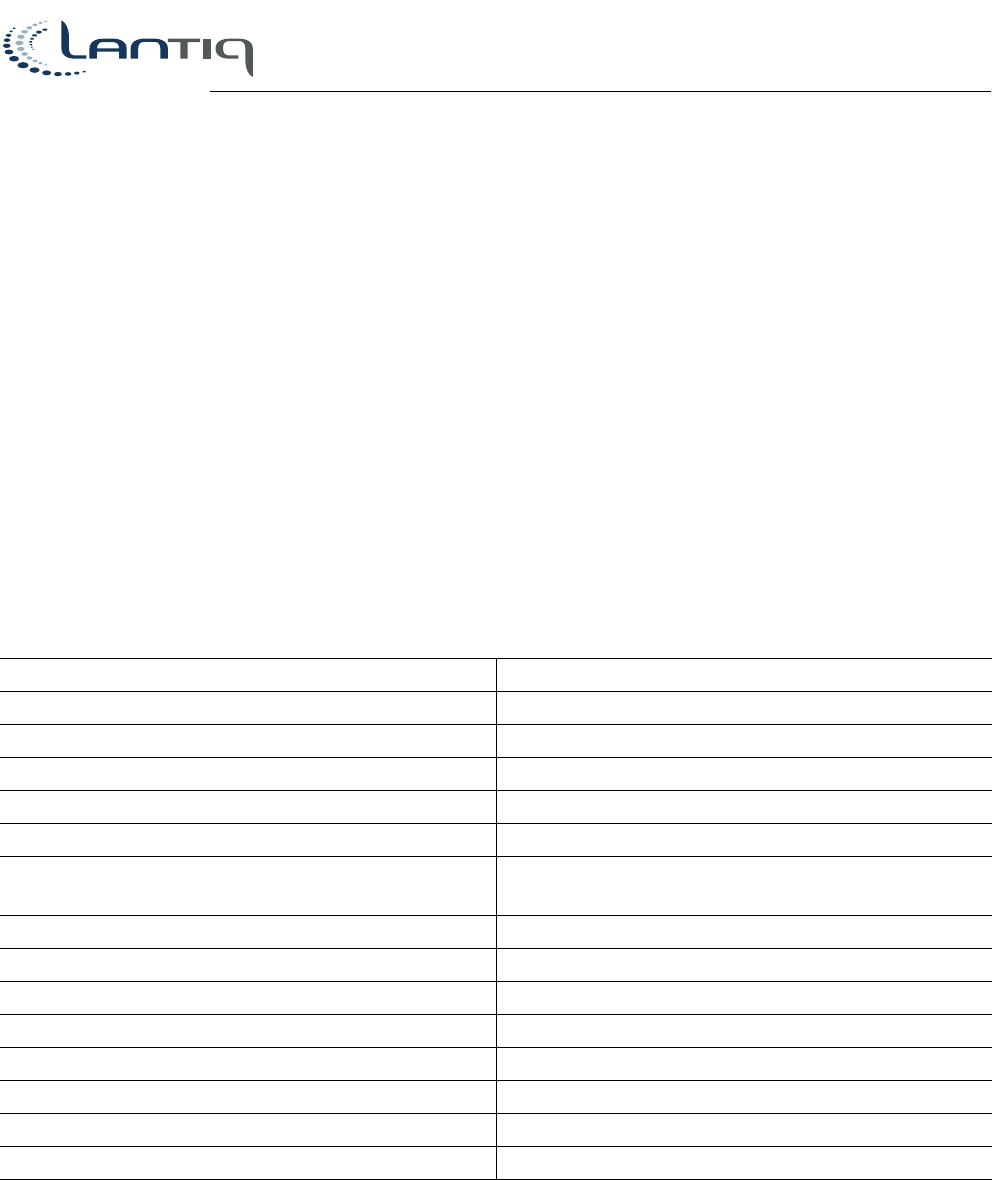
DUT Graphical User Interface
DUT Tool Package
Appendix A - PCI EEPROM Address Map
Confidential
User’s Guide 33 Revision 1.1, 2013-05-06
7 Appendix A - PCI EEPROM Address Map
The eeprom structure includes four major sections:
1. Executive control Region (00-04h)
The first two words are the eeprom signature. The signature is a known number which indicates valid eeprom
information (e.g. not empty).
2. PCI spec RunTime registers (05-0Bh)
These registers are the PCI configuration registers which must be in any PCI device. These registers with
combination of the CIS (see section 4), define the HW installed at the PCI bus. This region is restricted for PCI
HW definition native needs.
3. RunTime registers - (0C-3Fh)
These registers are used as default configuration for the PCI
Initiator and target HW. It includes Device and Vendor Id, shared RAM address and configuration space
address.
4. Initialization section - (40-F8h)
This section is used to save initialization parameters as Card type and version, MAC address, serial number,
calibration data and other Metlalink's native information.
Data Address
Header 0x40-0x47
HW configuration Sub Section type 0x48
HW configuration Sub Section length 0x49
HW type 0x4A
HW revision 0x4B
Country code (for Regulation domain) See APPENDIX F
for full country code list
0x4C
BB chip ID 0x4D
RF chip ID 0x4E
MAC address 0x4F-0x54
Serial number 0x55-0x57
Week and Year 0x58-0x59
TPC Calibration data Sub Section type 0x5A
TPC Calibration data Sub Section length 0x5B
TPC Calibration data 0x5C - 0xF8
Note: Modification of all sections off the EEPROM is forbidden and could result in initialization failure.
Table 7 EEPROM Address Map

Confidential
DUT Graphical User Interface
DUT Tool Package
Appendix B - Example Code for mt_dut.dll Usage
User’s Guide 34 Revision 1.1, 2013-05-06
8 Appendix B - Example Code for mt_dut.dll Usage
Use the mt_dut.dll to develop automatic applications to control the DUT. The following files are available to you
(in C:\Program Files\Lantiq\DUT\Developers):
• dut_api.h
• mt_types.h
• MT_DUT.lib
Example code:
This C source code defines the functions used by the supplied command line demo
application.
The Dut_XXX functions are declared in the supplied dut_api.h according to the
specifications, and you can also use the supplied MT_DUT.LIB for easier access to
the MT_DUT.DLL.
#include "../dut_api.h" // Set to your path of the dut_api.h file
#include <stdio.h>
#include <stdlib.h>
/// Prints the API error in case ret is MT_RET_FAIL
int TryRunning(int ret)
{
if (ret == MT_RET_FAIL) printf("%s\n", Dut_GetLastError());
return ret;
}
/// Prints the driver or API version
int DriverVersion()
{
double version;
Dut_DriverVersion(&version);
printf("Driver version: %.2f\n", version);
return MT_RET_OK;
}
// Initialize the driver (in our command line application, it is called
automatically)
int DriverInit()
{
return TryRunning(Dut_DriverInit());
}
// Releases the driver, and exits the application
int DriverRelease()
{
if (!TryRunning(Dut_DriverRelease())) return MT_RET_FAIL;
exit(MT_RET_OK);
return MT_RET_OK;
}

DUT Graphical User Interface
DUT Tool Package
Appendix B - Example Code for mt_dut.dll Usage
Confidential
User’s Guide 35 Revision 1.1, 2013-05-06
int SetChannel(int Mode, int band, int BW, int channel, BYTE calibrationMask)
{
return TryRunning(Dut_SetChannel(Mode, band, BW, channel, calibrationMask));
}
int ChangeScramblerMode(BYTE mode)
{
return TryRunning(Dut_ChangeScramblerMode(mode));
}
int SetTPC(int TPC)
{
return TryRunning(Dut_SetTPC(TPC));
}
int TxPackets(int mode, int rateIndex, int BW, int length, int repetitions)
{
return TryRunning(Dut_TxPackets(mode, rateIndex, BW, length, repetitions));
}
int EndTxPackets()
{
return TryRunning(Dut_EndTxPackets());
}
int BurnEEPROM(DWORD address, BYTE value)
{
return TryRunning(Dut_BurnEEPROM(address, 1, &value));
}
int ReadEEPROM(DWORD address)
{
BYTE value;
if (!TryRunning(Dut_ReadEEPROM(address, 1, &value))) return MT_RET_FAIL;
printf("Got %02Xh from the EEPROM\n", (int)value);
return MT_RET_OK;
}
int SetRxAntenna(int mask)
{
return TryRunning(Dut_SetRxAntenna(mask));
}
int SetTxAntenna(int mask)
{
return TryRunning(Dut_SetTxAntenna(mask));
}
int MacPacketsCounter()

Confidential
DUT Graphical User Interface
DUT Tool Package
Appendix B - Example Code for mt_dut.dll Usage
User’s Guide 36 Revision 1.1, 2013-05-06
{
DWORD PacketsCounter;
if(!TryRunning(Dut_MacPacketsCounter(&PacketsCounter))) return
MT_RET_FAIL;
printf("MAC PacketCounter = %d\n",(int)PacketsCounter);
return MT_RET_OK;
}
int PhyPacketsCounter()
{
int i;
double PacketsVector[2];
if(!TryRunning(Dut_PacketsCounter(PacketsVector))) return MT_RET_FAIL;
for (i=0; i<2; ++i)
printf("PacketCounter %d=%f\n", i, PacketsVector[i]);
return MT_RET_OK;
}
int ResetPacketsCounter()
{
if(!TryRunning(Dut_ResetPacketsCounter())) return MT_RET_FAIL;
return MT_RET_OK;
}
int RSSIVector()
{
int i;
double RSSIVector[3];
if (!TryRunning(Dut_RSSIVector(RSSIVector))) return MT_RET_FAIL;
for (i=0; i<3; ++i)
printf("RSSI Ant %d=%f\n", i, RSSIVector[i]);
return MT_RET_OK;
}
// Directly writes a masked 32-bit value to the firmware memory space.
int WriteReg(DWORD address, DWORD data, DWORD mask)
{
return TryRunning(Dut_WriteData(address, data, mask));
}
int ReadReg(DWORD address, DWORD mask)
{
DWORD data = 0;
if (!TryRunning(Dut_ReadData(address, &data, mask))) return MT_RET_FAIL;
printf("Received data: 0x%08X\n", data);
return MT_RET_OK;
}
int ReadVoltageValue(int antenna)
{

DUT Graphical User Interface
DUT Tool Package
Appendix B - Example Code for mt_dut.dll Usage
Confidential
User’s Guide 37 Revision 1.1, 2013-05-06
double voltage = 0.0;
if (!TryRunning(Dut_ReadVoltageValue(antenna, &voltage))) return
MT_RET_FAIL;
printf("Antenna voltage: %f\n", voltage);
return MT_RET_OK;
}
int BURN_DATE(int year, int week)
{
return (TryRunning(Dut_Burn_Date(year, week)));
}
int BURN_MAC_ADDRESS(BYTE b0, BYTE b1, BYTE b2, BYTE b3, BYTE b4, BYTE b5)
{
BYTE macAddr[6] = {b0, b1, b2, b3, b4, b5};
return (TryRunning(Dut_Burn_MAC_Address(macAddr)));
}
int BURN_CAL_DATA(int channel, int band, int TPC0, int maxPower0, double a0, double
b0)
{
int i;
Dut_CalDataStruct calData;
calData.band = band;
calData.channel = channel;
for (i=0; i<2; ++i) // In this example, we use the same variables for ant0
and ant1
{
calData.ants[i].TPC = TPC0;
calData.ants[i].a = a0;
calData.ants[i].b = b0;
calData.ants[i].maxPower = maxPower0;
}
return (TryRunning(Dut_Burn_Cal_Data(&calData)));
}
// Burn an example file to the EEPROM
int BURN_FILE()
{
return (TryRunning(Dut_Burn_File("eeprom_file.txt")));
}
// Burns the serial number to the EEPROM
int BURN_SN(unsigned int SN)
{
return (TryRunning(Dut_Burn_SN(SN)));
}
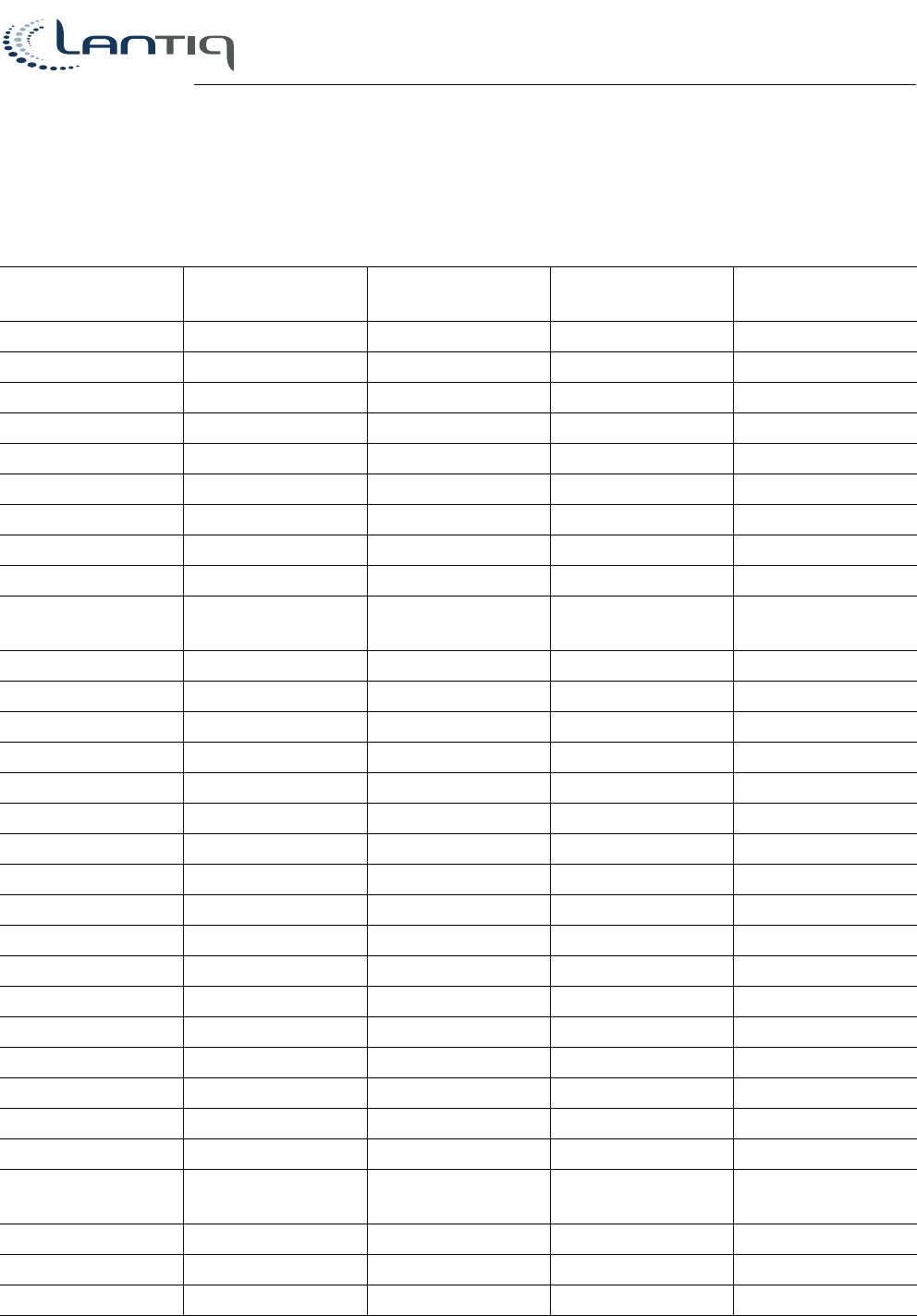
Confidential
DUT Graphical User Interface
DUT Tool Package
Appendix C - Country Codes
User’s Guide 38 Revision 1.1, 2013-05-06
9 Appendix C - Country Codes
Table 8 Country Codes
EEPROM Value
(Hex)
EEPROM Value
(Decimal)
Country Name Country Code Regulatory Domain
1 1 AFGHANISTAN AF Europe
2 2 ÅLAND ISLANDS AX Europe
3 3 ALBANIA AL Europe
4 4 ALGERIA DZ Europe
5 5 AMERICAN SAMOA AS Europe
6 6 ANDORRA AD Europe
7 7 ANGOLA AO Europe
8 8 ANGUILLA AI USA
9 9 ANTARCTICA AQ Europe
0A 10 ANTIGUA AND
BARBUDA
AG USA
0B 11 ARGENTINA AR USA
0C 12 ARMENIA AM Europe
0D 13 ARUBA AW USA
0E 14 AUSTRALIA AU Japan
0F 15 AUSTRIA AT Europe
10 16 AZERBAIJAN AZ Europe
11 17 BAHAMAS BS USA
12 18 BAHRAIN BH Europe
13 19 BANGLADESH BD Japan
14 20 BARBADOS BB USA
15 21 BELARUS BY Europe
16 22 BELGIUM BE Europe
17 23 BELIZE BZ USA
18 24 BENIN BJ Europe
19 25 BERMUDA BM USA
1A 26 BHUTAN BT Japan
1B 27 BOLIVIA BO USA
1C 28 BOSNIA AND
HERZEGOVINA
BA Europe
1D 29 BOTSWANA BW Japan
1E 30 BOUVET ISLAND BV Japan
1F 31 BRAZIL BR USA
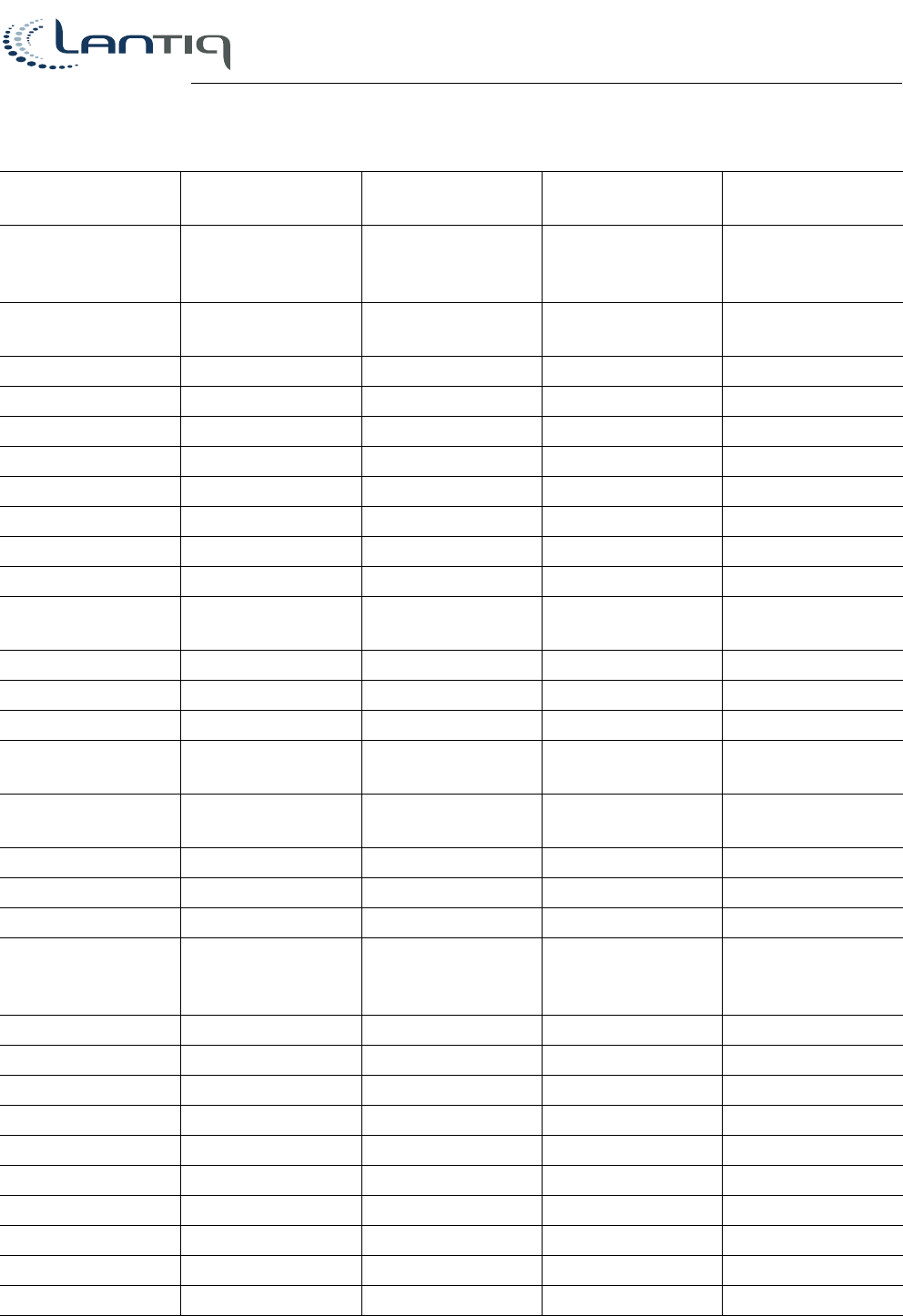
DUT Graphical User Interface
DUT Tool Package
Appendix C - Country Codes
Confidential
User’s Guide 39 Revision 1.1, 2013-05-06
20 32 BRITISH INDIAN
OCEAN
TERRITORY
IO Japan
21 33 BRUNEI
DARUSSALAM
BN Japan
22 34 BULGARIA BG Europe
23 35 BURKINA FASO BF Japan
24 36 BURUNDI BI Europe
25 37 CAMBODIA KH Europe
26 38 CAMEROON CM Europe
27 39 CANADA CA USA
28 40 CAPE VERDE CV Japan
29 41 CAYMAN ISLANDS KY USA
2A 42 CENTRAL AFRICAN
REPUBLIC
CF Europe
2B 43 CHAD TD Europe
2C 44 CHILE CL USA
2D 45 CHINA CN Japan
2E 46 CHRISTMAS
ISLAND
CX Japan
2F 47 COCOS (KEELING)
ISLANDS
CC Japan
30 48 COLOMBIA CO USA
31 49 COMOROS KM Europe
32 50 CONGO CG Europe
33 51 CONGO, THE
DEMOCRATIC
REPUBLIC OF THE
CD Japan
34 52 COOK ISLANDS CK Japan
35 53 COSTA RICA CR USA
36 54 CÔTE D'IVOIRE CI Japan
37 55 CROATIA HR Europe
38 56 CUBA CU USA
39 57 CYPRUS CY Europe
3A 58 CZECH REPUBLIC CZ Europe
3B 59 DENMARK DK Europe
3C 60 DJIBOUTI DJ Japan
3D 61 DOMINICA DM USA
Table 8 Country Codes (cont’d)
EEPROM Value
(Hex)
EEPROM Value
(Decimal)
Country Name Country Code Regulatory Domain
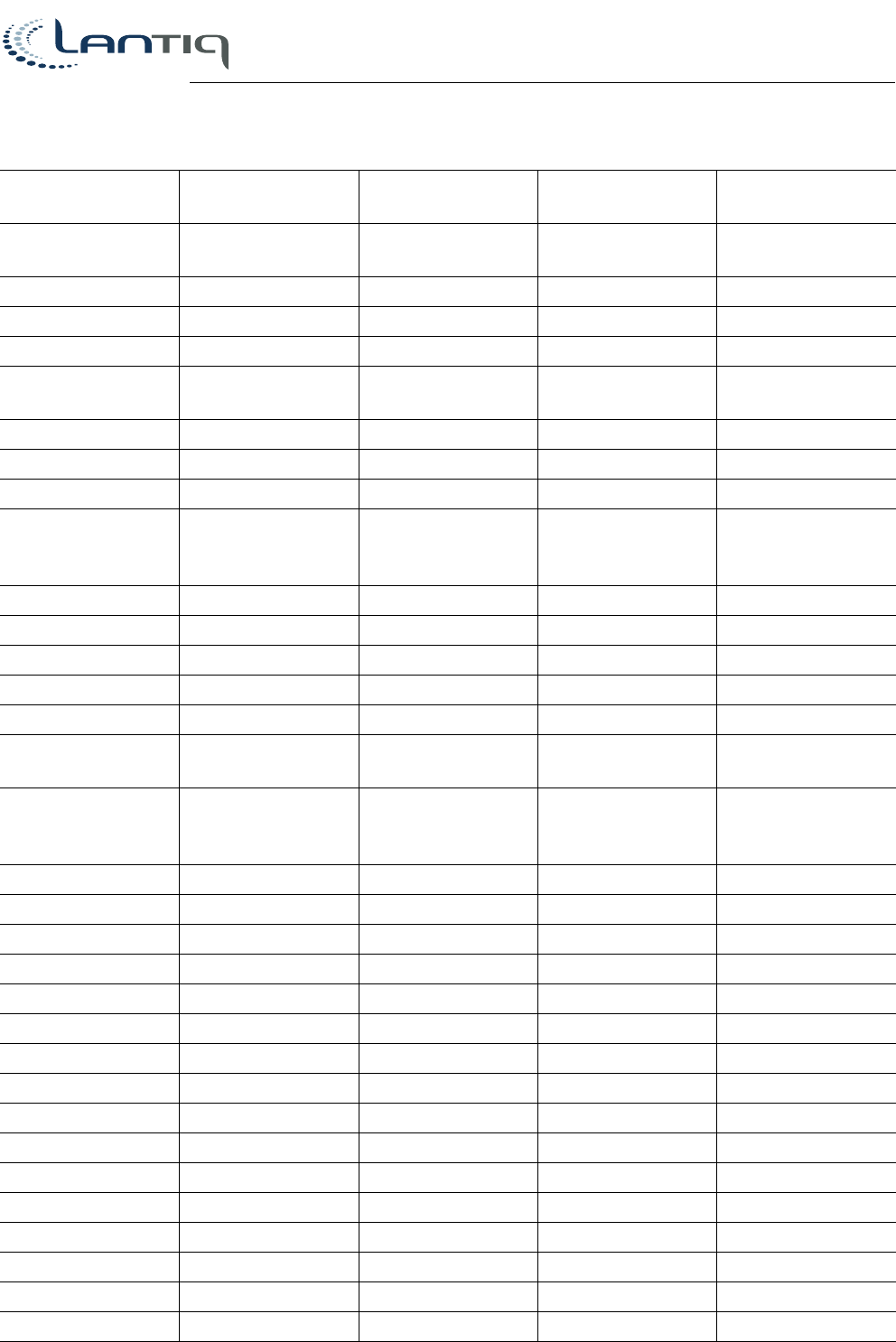
Confidential
DUT Graphical User Interface
DUT Tool Package
Appendix C - Country Codes
User’s Guide 40 Revision 1.1, 2013-05-06
3E 62 DOMINICAN
REPUBLIC
DO USA
3F 63 ECUADOR EC USA
40 64 EGYPT EG Europe
43 67 EL SALVADOR SV USA
44 68 EQUATORIAL
GUINEA
GQ Europe
45 69 ERITREA ER Europe
46 70 ESTONIA EE Europe
47 71 ETHIOPIA ET Europe
48 72 FALKLAND
ISLANDS
(MALVINAS)
FK USA
49 73 FAROE ISLANDS FO Europe
4A 74 FIJI FJ Japan
4B 75 FINLAND FI Europe
4C 76 FRANCE FR Europe
4D 77 FRENCH GUIANA GF Europe
4E 78 FRENCH
POLYNESIA
PF Europe
4F 79 FRENCH
SOUTHERN
TERRITORIES
TF Japan
50 80 GABON GA Europe
51 81 GAMBIA GM Europe
52 82 GEORGIA GE Europe
53 83 GERMANY DE Europe
54 84 GHANA GH Japan
55 85 GIBRALTAR GI Europe
56 86 GREECE GR Europe
57 87 GREENLAND GL USA
58 88 GRENADA GD USA
59 89 GUADELOUPE GP Europe
5A 90 GUAM GU Japan
5B 91 GUATEMALA GT USA
5C 92 GUERNSEY GG Europe
5D 93 GUINEA GN Europe
5E 94 GUINEA-BISSAU GW Europe
5F 95 GUYANA GY USA
Table 8 Country Codes (cont’d)
EEPROM Value
(Hex)
EEPROM Value
(Decimal)
Country Name Country Code Regulatory Domain
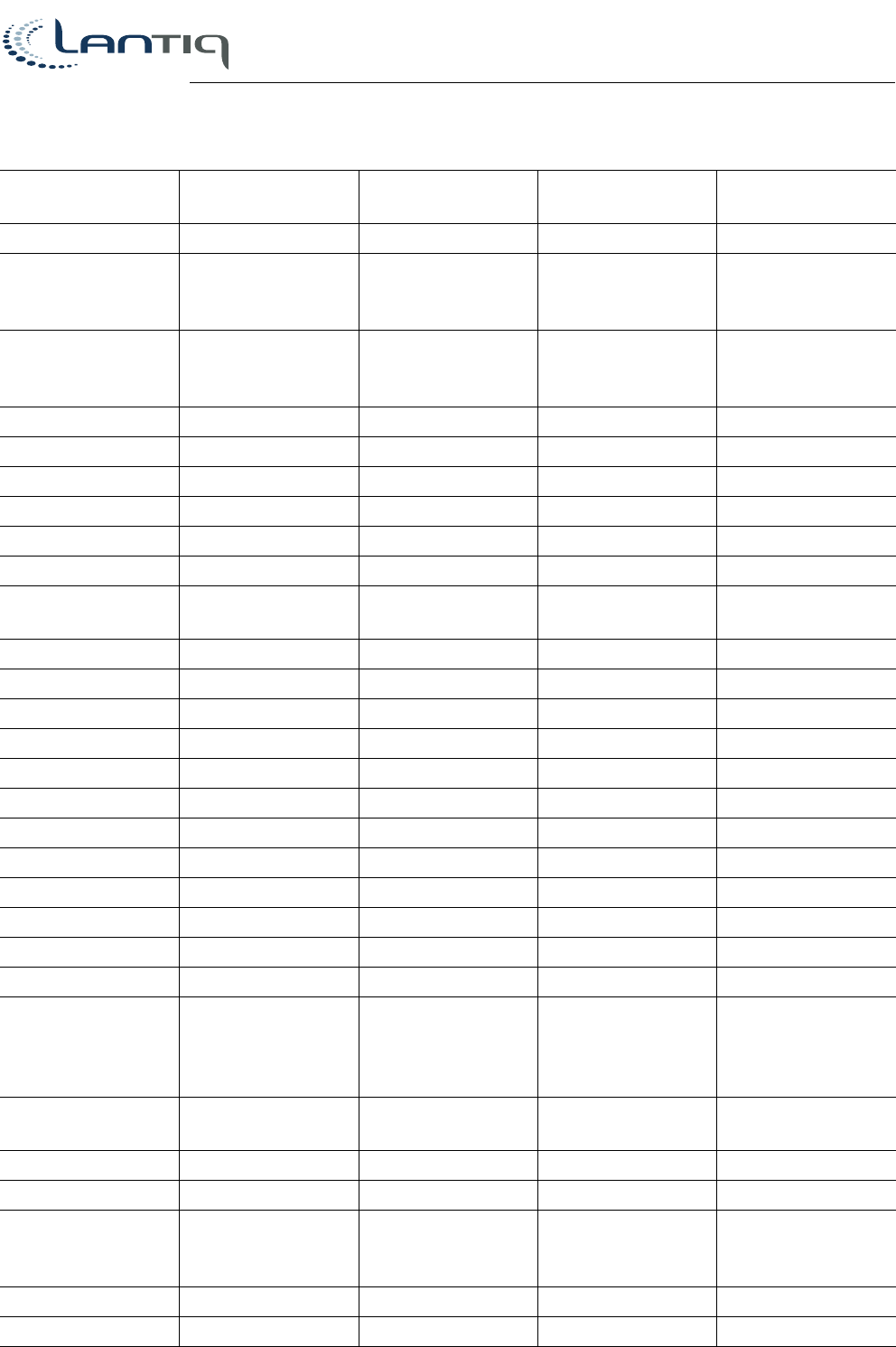
DUT Graphical User Interface
DUT Tool Package
Appendix C - Country Codes
Confidential
User’s Guide 41 Revision 1.1, 2013-05-06
60 96 HAITI HT USA
61 97 HEARD ISLAND
AND MCDONALD
ISLANDS
HM Japan
62 98 HOLY SEE
(VATICAN CITY
STATE)
VA Europe
63 99 HONDURAS HN USA
64 100 HONG KONG HK Japan
65 101 HUNGARY HU Europe
66 102 ICELAND IS Europe
67 103 INDIA IN Japan
68 104 INDONESIA ID Japan
69 105 IRAN, ISLAMIC
REPUBLIC OF
IR Europe
6A 106 IRAQ IQ Europe
6B 107 IRELAND IE Europe
6C 108 ISLE OF MAN IM Europe
6D 109 ISRAEL IL Europe
6E 110 ITALY IT Europe
6F 111 JAMAICA JM USA
70 112 JAPAN JP Japan
71 113 JERSEY JE Europe
72 114 JORDAN JO Europe
73 115 KAZAKHSTAN KZ Europe
74 116 KENYA KE Europe
75 117 KIRIBATI KI Europe
76 118 KOREA,
DEMOCRATIC
PEOPLE'S
REPUBLIC OF
KP Japan
77 119 KOREA, REPUBLIC
OF
KR Japan
78 120 KUWAIT KW Europe
79 121 KYRGYZSTAN KG Europe
7A 122 LAO PEOPLE'S
DEMOCRATIC
REPUBLIC
LA Japan
7B 123 LATVIA LV Europe
7C 124 LEBANON LB Europe
Table 8 Country Codes (cont’d)
EEPROM Value
(Hex)
EEPROM Value
(Decimal)
Country Name Country Code Regulatory Domain
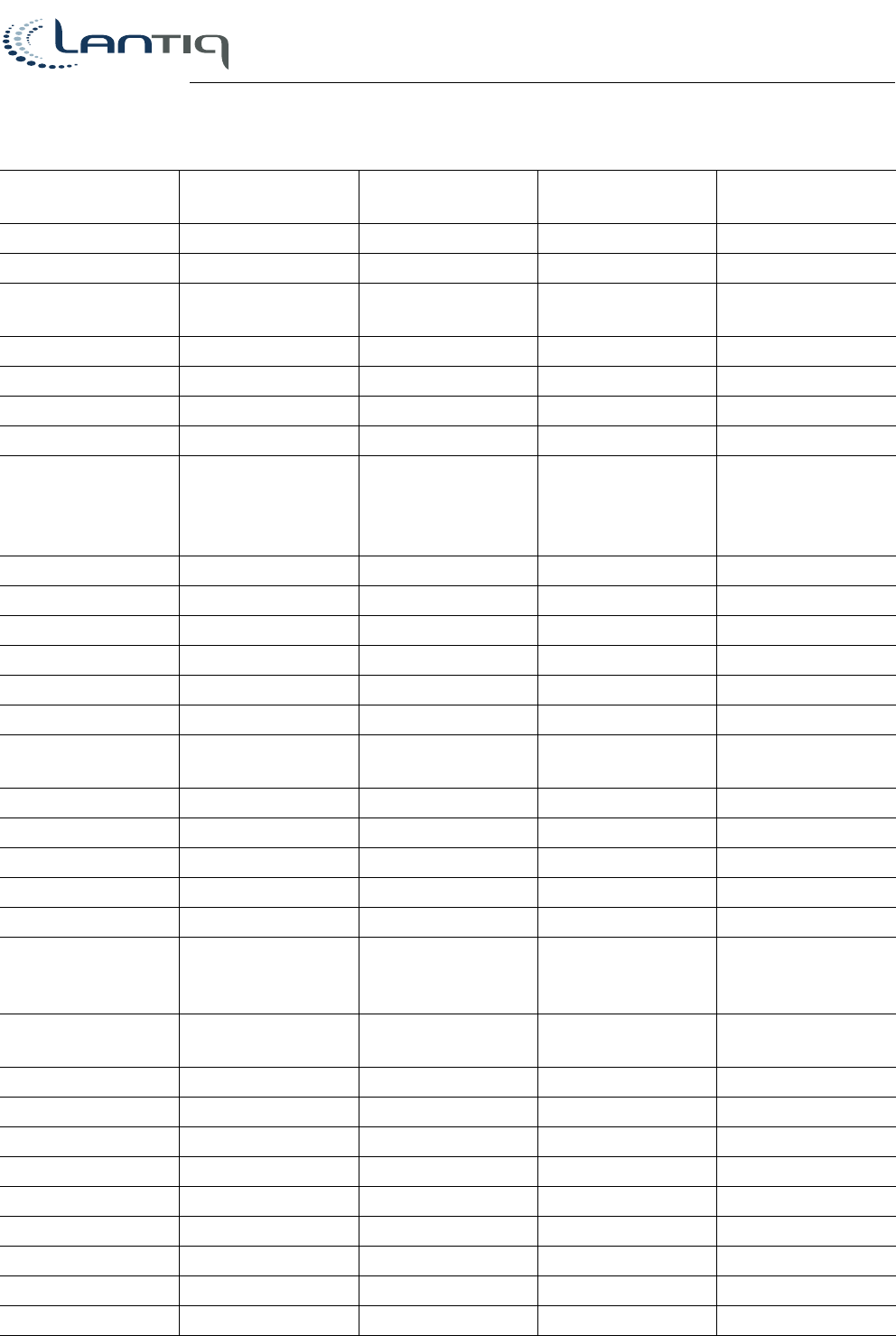
Confidential
DUT Graphical User Interface
DUT Tool Package
Appendix C - Country Codes
User’s Guide 42 Revision 1.1, 2013-05-06
7D 125 LESOTHO LS Europe
7E 126 LIBERIA LR Europe
7F 127 LIBYAN ARAB
JAMAHIRIYA
LY Europe
80 128 LIECHTENSTEIN LI Europe
81 129 LITHUANIA LT Europe
82 130 LUXEMBOURG LU Europe
83 131 MACAO MO Europe
84 132 MACEDONIA, THE
FORMER
YUGOSLAV
REPUBLIC OF
MK Europe
85 133 MADAGASCAR MG Europe
86 134 MALAWI MW Europe
87 135 MALAYSIA MY Japan
88 136 MALDIVES MV Japan
89 137 MALI ML Europe
8A 138 MALTA MT Europe
8B 139 MARSHALL
ISLANDS
MH Japan
8C 140 MARTINIQUE MQ Europe
8D 141 MAURITANIA MR Europe
8E 142 MAURITIUS MU Europe
8F 143 MAYOTTE YT Europe
90 144 MEXICO MX USA
91 145 MICRONESIA,
FEDERATED
STATES OF
FM Japan
92 146 MOLDOVA,
REPUBLIC OF
MD Europe
93 147 MONACO MC Europe
94 148 MONGOLIA MN Europe
95 149 MONTENEGRO ME Europe
96 150 MONTSERRAT MS Europe
97 151 MOROCCO MA Europe
98 152 MOZAMBIQUE MZ Europe
99 153 MYANMAR MM Europe
9A 154 NAMIBIA NA Europe
9B 155 NAURU NR Japan
Table 8 Country Codes (cont’d)
EEPROM Value
(Hex)
EEPROM Value
(Decimal)
Country Name Country Code Regulatory Domain
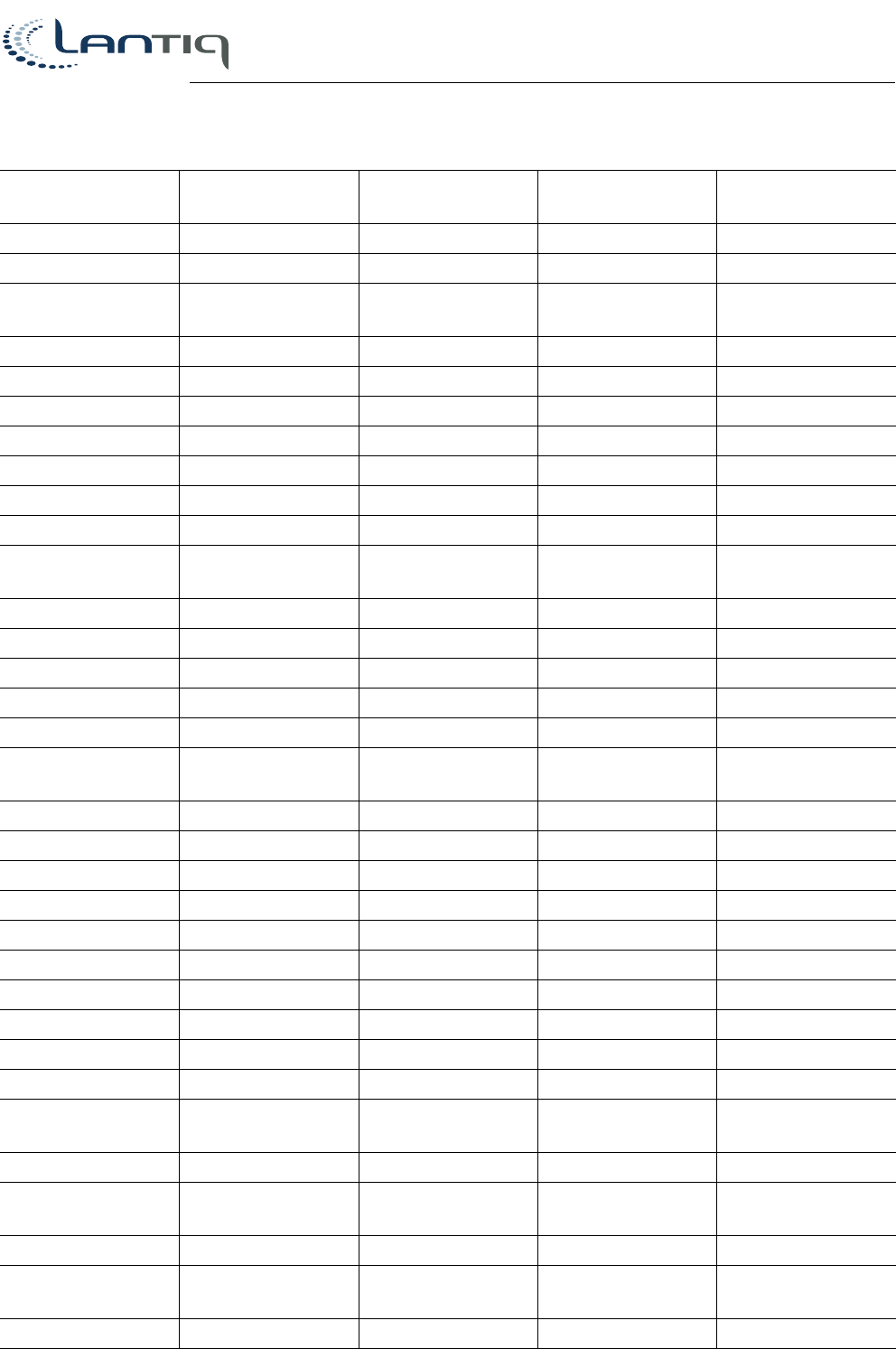
DUT Graphical User Interface
DUT Tool Package
Appendix C - Country Codes
Confidential
User’s Guide 43 Revision 1.1, 2013-05-06
9C 156 NEPAL NP Japan
9D 157 NETHERLANDS NL Europe
9E 158 NETHERLANDS
ANTILLES
AN USA
9F 159 NEW CALEDONIA NC Japan
A0 160 NEW ZEALAND NZ Japan
A1 161 NICARAGUA NI USA
A2 162 NIGER NE Europe
A3 163 NIGERIA NG Europe
A4 164 NIUE NU Japan
A5 165 NORFOLK ISLAND NF Japan
A6 166 NORTHERN
MARIANA ISLANDS
MP Japan
A7 167 NORWAY NO Europe
A8 168 OMAN OM Europe
A9 169 PAKISTAN PK Europe
AA 170 PALAU PW Japan
AB 171 PANAMA PA USA
AC 172 PAPUA NEW
GUINEA
PG Europe
AD 173 PARAGUAY PY USA
AE 174 PERU PE USA
AF 175 PHILIPPINES PH Japan
B0 176 PITCAIRN PN Japan
B1 177 POLAND PL Europe
B2 178 PORTUGAL PT Europe
B3 179 PUERTO RICO PR USA
B4 180 QATAR QA Europe
B5 181 RÉUNION RE Europe
B6 182 ROMANIA RO Europe
B7 183 RUSSIAN
FEDERATION
RU Europe
B8 184 RWANDA RW Europe
B9 185 SAINT
BARTHÉLEMY
BL USA
BA 186 SAINT HELENA SH Europe
BB 187 SAINT KITTS AND
NEVIS
KN USA
BC 188 SAINT LUCIA LC USA
Table 8 Country Codes (cont’d)
EEPROM Value
(Hex)
EEPROM Value
(Decimal)
Country Name Country Code Regulatory Domain
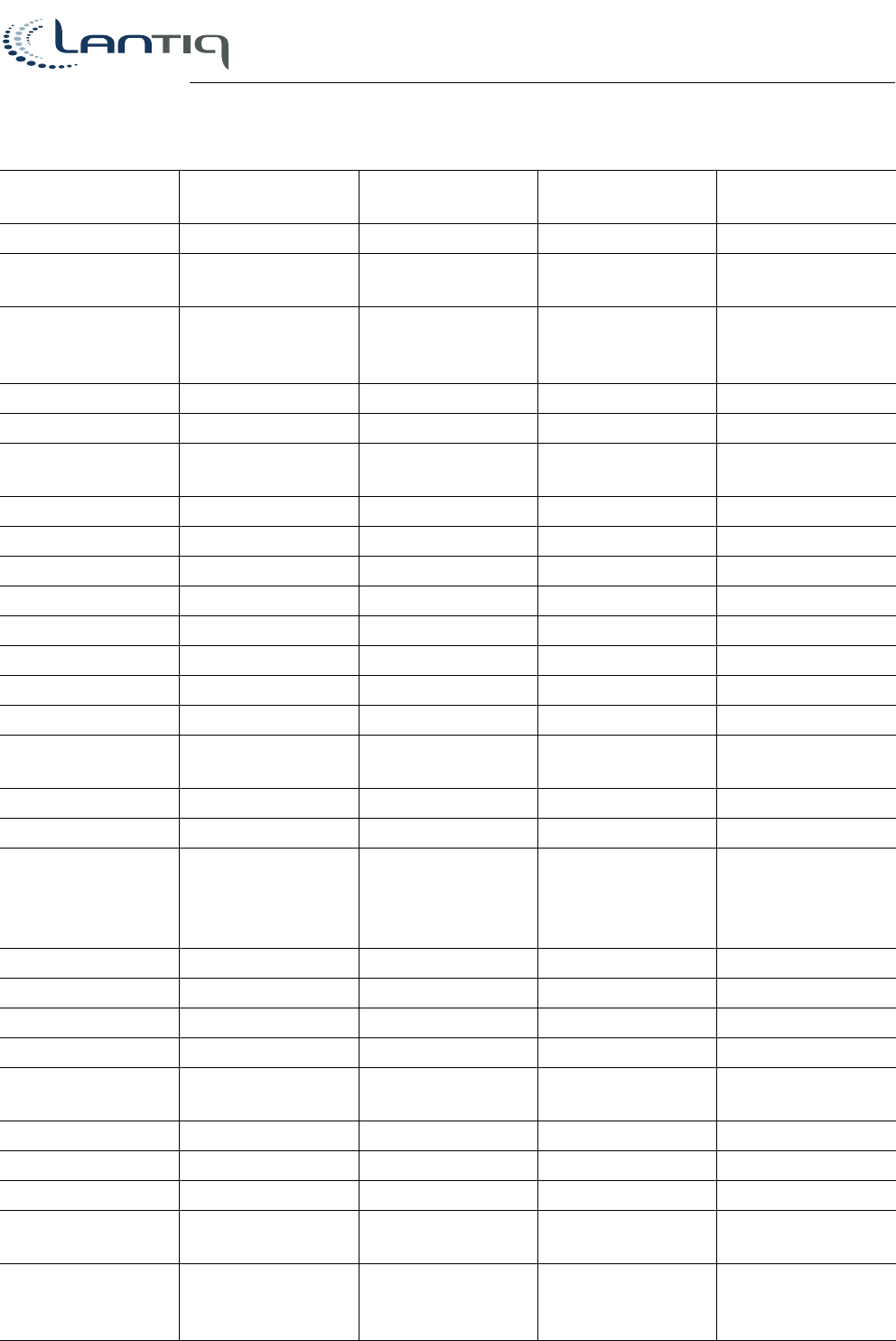
Confidential
DUT Graphical User Interface
DUT Tool Package
Appendix C - Country Codes
User’s Guide 44 Revision 1.1, 2013-05-06
BD 189 SAINT MARTIN MF USA
BE 190 SAINT PIERRE AND
MIQUELON
PM USA
BF 191 SAINT VINCENT
AND THE
GRENADINES
VC USA
C0 192 SAMOA WS Japan
C1 193 SAN MARINO SM Europe
C2 194 SAO TOME AND
PRINCIPE
ST Europe
C3 195 SAUDI ARABIA SA Europe
C4 196 SENEGAL SN Europe
C5 197 SERBIA RS Europe
C6 198 SEYCHELLES SC Japan
C7 199 SIERRA LEONE SL Europe
C8 200 SINGAPORE SG Japan
C9 201 SLOVAKIA SK Europe
CA 202 SLOVENIA SI Europe
CB 203 SOLOMON
ISLANDS
SB Japan
CC 204 SOMALIA SO Europe
CD 205 SOUTH AFRICA ZA Europe
CE 206 SOUTH GEORGIA
AND THE SOUTH
SANDWICH
ISLANDS
GS Europe
CF 207 SPAIN ES Europe
D0 208 SRI LANKA LK Japan
D1 209 SUDAN SD Europe
D2 210 SURINAME SR USA
D3 211 SVALBARD AND
JAN MAYEN
SJ Europe
D4 212 SWAZILAND SZ Europe
D5 213 SWEDEN SE Europe
D6 214 SWITZERLAND CH Europe
D7 215 SYRIAN ARAB
REPUBLIC
SY Europe
D8 216 TAIWAN,
PROVINCE OF
CHINA
TW Japan
Table 8 Country Codes (cont’d)
EEPROM Value
(Hex)
EEPROM Value
(Decimal)
Country Name Country Code Regulatory Domain
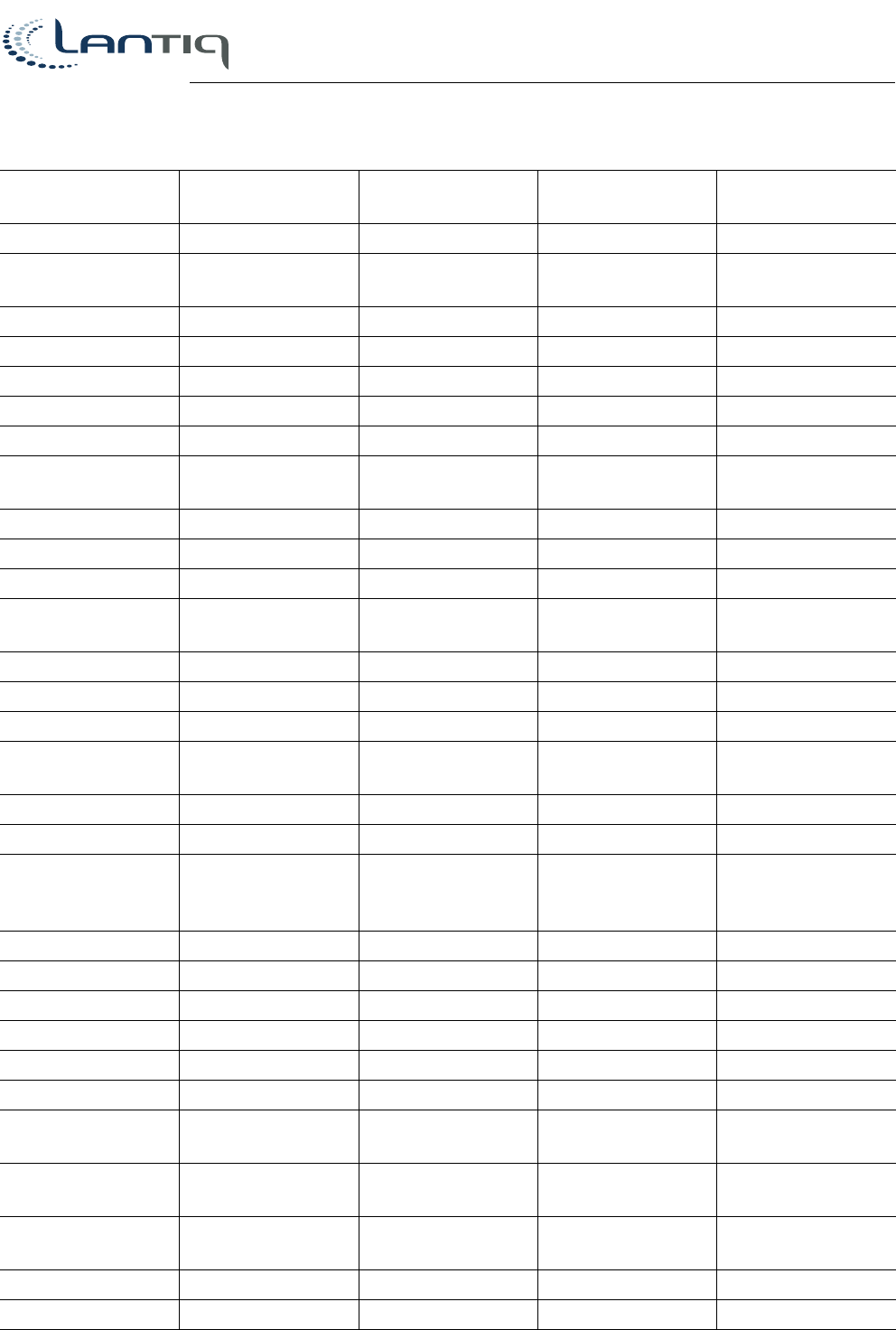
DUT Graphical User Interface
DUT Tool Package
Appendix C - Country Codes
Confidential
User’s Guide 45 Revision 1.1, 2013-05-06
D9 217 TAJIKISTAN TJ Europe
DA 218 TANZANIA, UNITED
REPUBLIC OF
TZ Europe
DB 219 THAILAND TH Japan
DC 220 TIMOR-LESTE TL Japan
DD 221 TOGO TG Europe
DE 222 TOKELAU TK Japan
DF 223 TONGA TO Europe
E0 224 TRINIDAD AND
TOBAGO
TT Europe
E1 225 TUNISIA TN Europe
E2 226 TURKEY TR Europe
E3 227 TURKMENISTAN TM Europe
E4 228 TURKS AND
CAICOS ISLANDS
TC USA
E5 229 TUVALU TV Japan
E6 230 UGANDA UG Europe
E7 231 UKRAINE UA Europe
E8 232 UNITED ARAB
EMIRATES
AE Europe
E9 233 UNITED KINGDOM GB Europe
EA 234 UNITED STATES US USA
EB 235 UNITED STATES
MINOR OUTLYING
ISLANDS
UM USA
EC 236 URUGUAY UY USA
ED 237 UZBEKISTAN UZ Europe
EE 238 VANUATU VU Japan
F0 240 VENEZUELA VE USA
F1 241 VIET NAM VN Japan
F2 242 VIRGIN ISLANDS,
BRITISH
VG USA
F3 243 VIRGIN ISLANDS,
U.S.
VI USA
F4 244 WALLIS AND
FUTUNA
WF Europe
F5 245 WESTERN SAHARA EH Europe
F6 246 YEMEN YE Europe
Table 8 Country Codes (cont’d)
EEPROM Value
(Hex)
EEPROM Value
(Decimal)
Country Name Country Code Regulatory Domain

Confidential
DUT Graphical User Interface
DUT Tool Package
Appendix C - Country Codes
User’s Guide 46 Revision 1.1, 2013-05-06
F7 247 ZAMBIA ZM Europe
F8 248 ZIMBABWE ZW Europe
Table 8 Country Codes (cont’d)
EEPROM Value
(Hex)
EEPROM Value
(Decimal)
Country Name Country Code Regulatory Domain
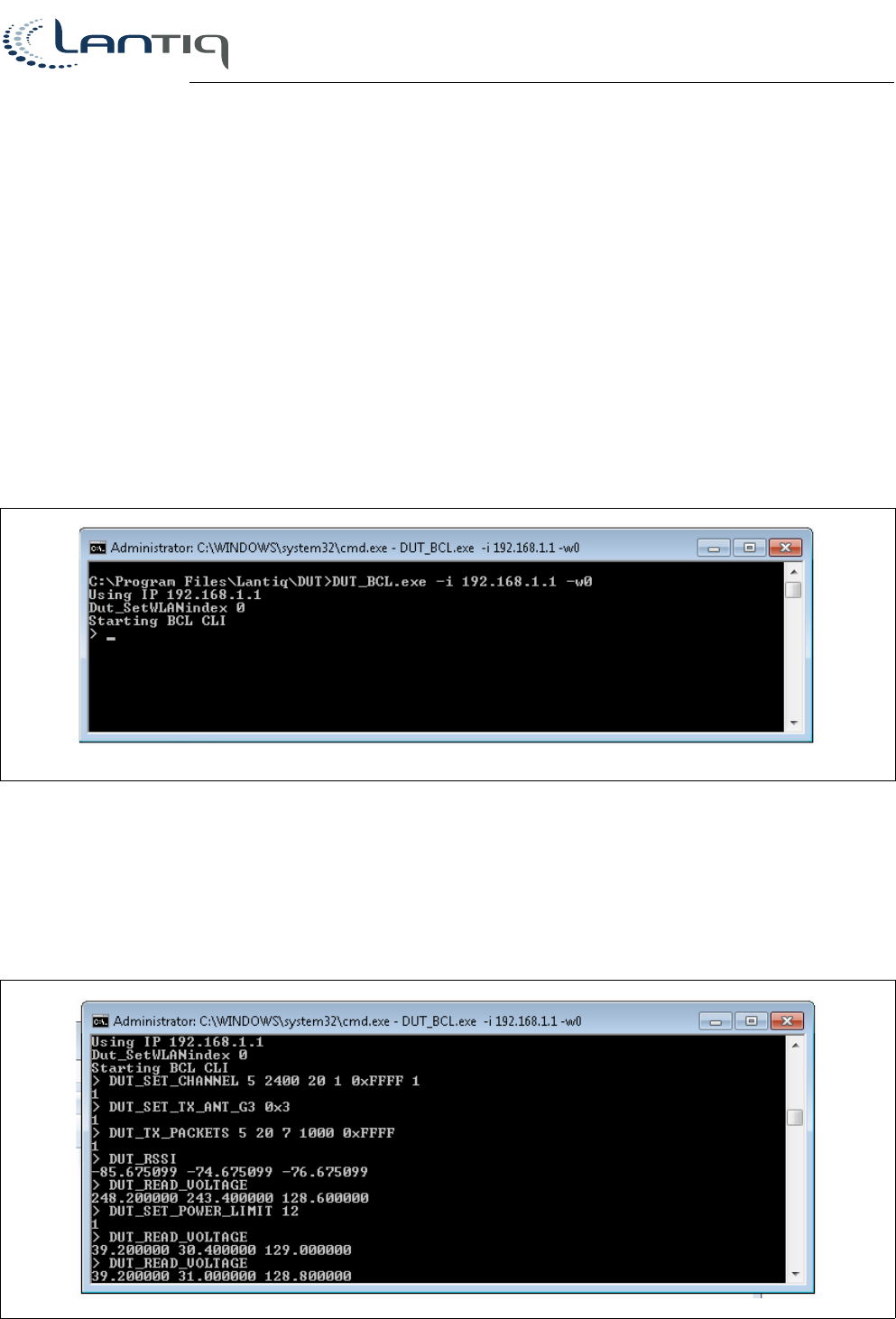
DUT Graphical User Interface
DUT Tool Package
Appendix D - Command Line Control
Confidential
User’s Guide 47 Revision 1.1, 2013-05-06
10 Appendix D - Command Line Control
During the DUT GUI installation, the DUT_BCL command line application is also installed.
The application enables 3 options for control of the Platform (all information can be seen with -help command):
• Opening a dedicated command window application
Syntex: DUT_BCL.exe -i <IP> -w<WLAN interface 0/1>
• Providing direct commands (one command at a time)
Syntax: DUT_BCL.exe -i<IP> -w<Wlan interface 0/1> -s -c <DUT Command + correct
syntax>
• Running a script file with various command
Syntax: DUT_BCL.exe -i<IP> -w<Wlan interface 0/1> -s -f <file name>
1. Run the tool from C:\Program Files\Lantiq\DUT\DUT_BCL.exe.
The cmd window appears (Figure 24).
Figure 24 BCL CLI
2. Type help at the command prompt to see the complete list of available functions.
3. Type the command name to see the correct syntax for that command.
For example:
> DUT_SET_CHANNEL
Incorrect number of parameters.
See Figure 25 for a successful command
Figure 25 Successful CLI Inputs

Confidential
DUT Graphical User Interface
DUT Tool Package
Appendix D - Command Line Control
User’s Guide 48 Revision 1.1, 2013-05-06
10.1 Basic Configurations
Mode
•0 for 802.11a
•1 for 802.11b
•2 for 802.11g
•4 for 802.11n 5 GHz
•5 for 802.11n 2.4 GHz
Band
2400 or 5000
BW
20 or 40
Channel
In accordance to channel index
calibrationMask
Always use 0xFFFF
Closedloop
•0 of open loop
•1 for closed loop
Antenna Configuration
3 bits:
• Bit 0 for Ant1
• Bit 1 for Ant2
• Bit 2 for Ant3

DUT Graphical User Interface
DUT Tool Package
References
Confidential
User’s Guide 49 Revision 1.1, 2013-05-06
References
[1] IEEE 802.11a-1999 High-speed Physical Layer in the 5 GHz band
http://standards.ieee.org/getieee802/download/802.11a-1999.pdf
[2] IEEE 802.11b-1999 Higher Speed Physical Layer Extension in the 2.4 GHz band
http://standards.ieee.org/getieee802/download/802.11b-1999.pdf
[3] IEEE 802.11g-2003 Further Higher Data Rate Extension in the 2.4 GHz Band
http://standards.ieee.org/getieee802/download/802.11g-2003.pdf
[4] IEEE 802.11n-2009—Amendment 5: Enhancements for Higher Throughput
http://standards.ieee.org/getieee802/download/802.11n-2009.pdf
[5] XWAY™ xRX300/WAVE300 DUT Tool Package Release 6.30 Release Note Rev. 2.4

Confidential
DUT Graphical User Interface
DUT Tool Package
Terminology
User’s Guide 50 Revision 1.1, 2013-05-06
Terminology
A
ACL Access Control List
AP Access Point.
B
BBIC Baseband Integrated Circuit
BPF Band Pass Filter
BSS The Basic Service Set (BSS) is the basic building block of a wireless LAN. Coverage of one
access point is called a BSS. An access point acts as a master to control the stations within
that BSS. Each BSS is identified by an SSID.
C
CB Channel Bonding (40 MHz transmission)
CLI Command Line Interface
D
DUT Device Under Test
E
ERP Extended Rate Policy
ESSID Extended Service Set Identifier
I
IOCTLS Input/output controls - typically employed to allow userspace code to communicate with
hardware devices
L
LDPC Low-Density Parity-Check code (LDPC code) - An error correcting code. A method of
transmitting a message over a noisy transmission channel.
M
MIMO Multiple-Input and Multiple-Output - The use of multiple antennas at both the transmitter and
receiver to improve communication performance. One of several forms of smart antenna
technology.
mPCI Mini PCI - A bus standard for attaching peripherals to a motherboard. Adapted from the
Peripheral Component Interconnect (PCI) bus. Originally designed for laptops and other
small-footprint computer systems.
Multicast The delivery of information to a group of destinations simultaneously using the most efficient
strategy to deliver the messages over each link of the network only once, creating copies only
when the links to the destinations split.
N
NCB Non Channel bonding (20 MHz transmission)
nCB Non-Channel Bonding
NFS Linux's "Network File System" - A way to share files between machines on a network as if the
files were located on the client's local hard drive.
NWID Network Identification Designator.
O

DUT Graphical User Interface
DUT Tool Package
Terminology
Confidential
User’s Guide 51 Revision 1.1, 2013-05-06
OCS Optimal Channel Selection
P
PBC Push Button Configuration
R
RFIC RF Integrated Circuit
RSSI Received Signal Strength Indication - a measurement of the power present in a received radio
signal.
S
SISO Single Input Single Output
STA Infrastructure Station
U
UUID Universally Unique Identifier
W
WEP Wired Equivalent Privacy - The original security protocol for Wi-Fi networks.
WPA WiFi Protected Access - A security protocol for Wi-Fi networks which provides stronger
security than WEP via enhanced encryption and user authentication.
WPS WiFi Protected Setup - A protocol designed to make it easier to set up and configure security
on Wi-Fi networks.
CE
CE RF Radiation Exposure Statement:
Caution This equipment complies with European RF radiation exposure limits set forth for
an uncontrolled environment. This equipment should be installed and operated with a
minimum distance of 20 centimeters between the radiator and your body. This transmitter
must not be co-located or operating in conjunction with any other antenna or transmitter.

FCC Information
This device complies with part 15 of the FCC Results. Operation is subject to the
following two conditions :
(1) This device may not cause harmful interface, and
(2) This device must accept any interference received, including interference that
may cause undesired operation.
Note: This equipment has been tested and found to comply with the limits for CLASS B digital device,
pursuant to Part 15 of FCC Rules. These limits are designed to provide reasonable protection against harmful
interference when the equipment is operated in a commercial environment This equipment generates, uses
and can radiate radio frequency energy and, if not installed and used in accordance with the instructions,
may cause harmful interference to radio communications. However, there is no guarantee that interference
will not occur in a particular installation. If this equipment does cause harmful interference to radio or
television reception, which can be determined by turning the equipment off and on, the user is encouraged
to try correct the interference by one or more of the following measures:
1.1. Reorient or relocate the receiving antenna.
1.2. Increase the separation between the equipment and receiver.
1.3. Connect the equipment into an outlet on a circuit different from that to which receiver is connected.
1.4. Consult the dealer or experienced radio/TV technician for help.
WARNING
Changes or modifications not expressly approved by the manufacturer could void the
user’s authority to operate the equipment.
Information for OEM Integrator
This device is intended only for OEM integrators under the following conditions:
1) The antenna must be installed such that 20 cm is maintained between the antenna and users, and
2) The transmitter module may not be co-located with any other transmitter or antenna.
End product labelling
The label for end product must include “Contains FCC ID: O6ZT9”.
“CAUTION : Exposure to Radio Frequency Radiation.
This equipment complies with FCC radiation exposure limits set forth for an uncontrolled environment. This
equipment must be installed and operated with minimum distance of 20cm between the radiator and your
body. This transmitter module is authorized only for use in device where the antenna may be installed such
that 20 cm may be maintained between the antenna and users.”
